#The Turk’s View of Christians and Society
Explore tagged Tumblr posts
Photo

The Turk’s View of Christians and Society
The Turk has not, and will not, blend with the Christians. He believes the Christians are inferior, and that Allah has placed them in a position of subjection. Massacres, in his view, are helpful because they allow the Muslims to take possession of things that Christians don’t have the right to. The Turk’s sense of morality is weakened by his belief in fate (kismet) and by the low status of women in his society.
Suspicion and Fear in Turkish Society
Everyone is suspicious of each other. A sense of fear runs through the official classes. A wealthy person is afraid to show his wealth because those in power will quickly find ways to take it from him. The policy of the Turkish government is to do nothing until forced to act, and when action is taken, it is slow. The guiding principle of Turkish administration is *yavaş, yavaş* — slowly, slowly — from the beginning to the end Who we are.
Under the Eye of Britain
Drama: The British Presence It is unclear exactly where Macedonia begins or ends. But traveling from Constantinople to Salonika, you stop at a small town called Drama. Drama is known to be in Macedonia because it is home to British officers who are there to help reform the local police force (gendarmerie) and monitor the tensions between Turks and Christians.
0 notes
Photo

The Turk’s View of Christians and Society
The Turk has not, and will not, blend with the Christians. He believes the Christians are inferior, and that Allah has placed them in a position of subjection. Massacres, in his view, are helpful because they allow the Muslims to take possession of things that Christians don’t have the right to. The Turk’s sense of morality is weakened by his belief in fate (kismet) and by the low status of women in his society.
Suspicion and Fear in Turkish Society
Everyone is suspicious of each other. A sense of fear runs through the official classes. A wealthy person is afraid to show his wealth because those in power will quickly find ways to take it from him. The policy of the Turkish government is to do nothing until forced to act, and when action is taken, it is slow. The guiding principle of Turkish administration is *yavaş, yavaş* — slowly, slowly — from the beginning to the end Who we are.
Under the Eye of Britain
Drama: The British Presence It is unclear exactly where Macedonia begins or ends. But traveling from Constantinople to Salonika, you stop at a small town called Drama. Drama is known to be in Macedonia because it is home to British officers who are there to help reform the local police force (gendarmerie) and monitor the tensions between Turks and Christians.
0 notes
Photo

The Turk’s View of Christians and Society
The Turk has not, and will not, blend with the Christians. He believes the Christians are inferior, and that Allah has placed them in a position of subjection. Massacres, in his view, are helpful because they allow the Muslims to take possession of things that Christians don’t have the right to. The Turk’s sense of morality is weakened by his belief in fate (kismet) and by the low status of women in his society.
Suspicion and Fear in Turkish Society
Everyone is suspicious of each other. A sense of fear runs through the official classes. A wealthy person is afraid to show his wealth because those in power will quickly find ways to take it from him. The policy of the Turkish government is to do nothing until forced to act, and when action is taken, it is slow. The guiding principle of Turkish administration is *yavaş, yavaş* — slowly, slowly — from the beginning to the end Who we are.
Under the Eye of Britain
Drama: The British Presence It is unclear exactly where Macedonia begins or ends. But traveling from Constantinople to Salonika, you stop at a small town called Drama. Drama is known to be in Macedonia because it is home to British officers who are there to help reform the local police force (gendarmerie) and monitor the tensions between Turks and Christians.
0 notes
Photo

The Turk’s View of Christians and Society
The Turk has not, and will not, blend with the Christians. He believes the Christians are inferior, and that Allah has placed them in a position of subjection. Massacres, in his view, are helpful because they allow the Muslims to take possession of things that Christians don’t have the right to. The Turk’s sense of morality is weakened by his belief in fate (kismet) and by the low status of women in his society.
Suspicion and Fear in Turkish Society
Everyone is suspicious of each other. A sense of fear runs through the official classes. A wealthy person is afraid to show his wealth because those in power will quickly find ways to take it from him. The policy of the Turkish government is to do nothing until forced to act, and when action is taken, it is slow. The guiding principle of Turkish administration is *yavaş, yavaş* — slowly, slowly — from the beginning to the end Who we are.
Under the Eye of Britain
Drama: The British Presence It is unclear exactly where Macedonia begins or ends. But traveling from Constantinople to Salonika, you stop at a small town called Drama. Drama is known to be in Macedonia because it is home to British officers who are there to help reform the local police force (gendarmerie) and monitor the tensions between Turks and Christians.
0 notes
Photo

The Turk’s View of Christians and Society
The Turk has not, and will not, blend with the Christians. He believes the Christians are inferior, and that Allah has placed them in a position of subjection. Massacres, in his view, are helpful because they allow the Muslims to take possession of things that Christians don’t have the right to. The Turk’s sense of morality is weakened by his belief in fate (kismet) and by the low status of women in his society.
Suspicion and Fear in Turkish Society
Everyone is suspicious of each other. A sense of fear runs through the official classes. A wealthy person is afraid to show his wealth because those in power will quickly find ways to take it from him. The policy of the Turkish government is to do nothing until forced to act, and when action is taken, it is slow. The guiding principle of Turkish administration is *yavaş, yavaş* — slowly, slowly — from the beginning to the end Who we are.
Under the Eye of Britain
Drama: The British Presence It is unclear exactly where Macedonia begins or ends. But traveling from Constantinople to Salonika, you stop at a small town called Drama. Drama is known to be in Macedonia because it is home to British officers who are there to help reform the local police force (gendarmerie) and monitor the tensions between Turks and Christians.
0 notes
Photo

The Turk’s View of Christians and Society
The Turk has not, and will not, blend with the Christians. He believes the Christians are inferior, and that Allah has placed them in a position of subjection. Massacres, in his view, are helpful because they allow the Muslims to take possession of things that Christians don’t have the right to. The Turk’s sense of morality is weakened by his belief in fate (kismet) and by the low status of women in his society.
Suspicion and Fear in Turkish Society
Everyone is suspicious of each other. A sense of fear runs through the official classes. A wealthy person is afraid to show his wealth because those in power will quickly find ways to take it from him. The policy of the Turkish government is to do nothing until forced to act, and when action is taken, it is slow. The guiding principle of Turkish administration is *yavaş, yavaş* — slowly, slowly — from the beginning to the end Who we are.
Under the Eye of Britain
Drama: The British Presence It is unclear exactly where Macedonia begins or ends. But traveling from Constantinople to Salonika, you stop at a small town called Drama. Drama is known to be in Macedonia because it is home to British officers who are there to help reform the local police force (gendarmerie) and monitor the tensions between Turks and Christians.
0 notes
Photo

The Turk’s View of Christians and Society
The Turk has not, and will not, blend with the Christians. He believes the Christians are inferior, and that Allah has placed them in a position of subjection. Massacres, in his view, are helpful because they allow the Muslims to take possession of things that Christians don’t have the right to. The Turk’s sense of morality is weakened by his belief in fate (kismet) and by the low status of women in his society.
Suspicion and Fear in Turkish Society
Everyone is suspicious of each other. A sense of fear runs through the official classes. A wealthy person is afraid to show his wealth because those in power will quickly find ways to take it from him. The policy of the Turkish government is to do nothing until forced to act, and when action is taken, it is slow. The guiding principle of Turkish administration is *yavaş, yavaş* — slowly, slowly — from the beginning to the end Who we are.
Under the Eye of Britain
Drama: The British Presence It is unclear exactly where Macedonia begins or ends. But traveling from Constantinople to Salonika, you stop at a small town called Drama. Drama is known to be in Macedonia because it is home to British officers who are there to help reform the local police force (gendarmerie) and monitor the tensions between Turks and Christians.
0 notes
Photo

The Turk’s View of Christians and Society
The Turk has not, and will not, blend with the Christians. He believes the Christians are inferior, and that Allah has placed them in a position of subjection. Massacres, in his view, are helpful because they allow the Muslims to take possession of things that Christians don’t have the right to. The Turk’s sense of morality is weakened by his belief in fate (kismet) and by the low status of women in his society.
Suspicion and Fear in Turkish Society
Everyone is suspicious of each other. A sense of fear runs through the official classes. A wealthy person is afraid to show his wealth because those in power will quickly find ways to take it from him. The policy of the Turkish government is to do nothing until forced to act, and when action is taken, it is slow. The guiding principle of Turkish administration is *yavaş, yavaş* — slowly, slowly — from the beginning to the end Who we are.
Under the Eye of Britain
Drama: The British Presence It is unclear exactly where Macedonia begins or ends. But traveling from Constantinople to Salonika, you stop at a small town called Drama. Drama is known to be in Macedonia because it is home to British officers who are there to help reform the local police force (gendarmerie) and monitor the tensions between Turks and Christians.
0 notes
Text
By: Eric W. Dolan
Published: Mar 12, 2023
New research provides evidence that left-wing authoritarianism is a valid concept that predicts important real-world phenomena, including restrictive communication norms and dogmatism. The findings, published in Frontiers in Psychology, are based on data collected from more than 8,000 U.S. residents and more than 60,000 individuals from around the world.
“I think authoritarianism is bad no matter what political color it wears,” said study author Lucian Gideon Conway III (@LGConwayIII), a professor of psychology at Grove City College and author of the book “Complex Simplicity: How Psychology Suggests Atheists are Wrong About Christianity.”
“It’s obvious to a lot of people that left-wing persons can be just as authoritarian as right-wing persons, and yet academics have been curiously reluctant to admit that, or even to show interest in studying it. We wanted to provide more definitive scientific evidence that left-wing authoritarianism was a real and pervasive problem, not just in the United States, but around the world.”
“Our set of 12 studies is an answer to critics who have claimed our prior award-winning work wasn’t enough to sway them to take left-wing authoritarianism seriously,” Conway said.
In previous research, Conway and his colleagues developed a measure of left-wing authoritarianism, which was adapted from the Right-Wing Authoritarianism Scale developed by psychologist Bob Altemeyer. The RWA Scale was designed to measure psychological traits and attitudes that are associated with right-wing authoritarianism, such as a preference for strong leaders, a belief in traditional values and social hierarchies, and a tendency to view people who are different from oneself with suspicion or hostility.
The RWA Scale asks participants how much they agree with statements such as: “It’s always better to trust the judgment of the proper authorities in government and religion than to listen to the noisy rabble-rousers in our society who are trying to create doubts in people’s minds” and “Our country desperately needs a mighty leader who will do what has to be done to destroy the radical new ways and sinfulness that are ruining us.”
Respondents rate their level of agreement with each statement on a scale ranging from strongly disagree to strongly agree. Based on the responses, researchers can calculate a person’s overall RWA score, which reflects their level of authoritarianism.
The new LWA Scale, on the other hand, includes items such as: “It’s always better to trust the judgment of the proper authorities in science with respect to issues like global warming and evolution than to listen to the noisy rabble-rousers in our society who are trying to create doubts in people’s minds” and “Our country desperately needs a mighty and liberal leader who will do what has to be done to destroy the radical traditional ways of doing things that are ruining us.”
The researchers first recruited 441 U.S. adults through Amazon’s Mechanical Turk to investigate how individuals perceive authoritarianism among people with left-wing and right-wing political beliefs. Participants were asked to identify the number of liberal and conservative authoritarian individuals they knew among their family, friends or acquaintances, co-workers, and news/TV/movie/sports personalities.
Results showed that participants reported significantly more right-wing authoritarianism than left-wing authoritarianism across all measures. However, participants still identified a substantial number of left-wing authoritarians. The findings suggests that authoritarianism is not exclusively associated with right-wing political orientations.
“We asked American participants to identify the number of left-wing authoritarians in their lives, and I was very surprised at the sheer number they identified,” Conway told PsyPost. “I had predicted the average American would identify 1 or 2, and I laughed at a non-academic who predicted closer to 15. But the truth was very much closer to 15 than to 1.”
“In fact, even liberal participants identified on average quite a large number of liberal authoritarians in their lives. So, while I was of course expecting some left-wing authoritarianism, I was frankly shocked at the sheer numbers that people reported. This debate about ‘is there a left-wing authoritarian person’ is obviously something unique to academia. The average citizen already believes there is indeed such a thing.”
Next, the researchers sought to test whether the RWA Scale and the LWA Scale measured what they purported to measure. To this end, they recruited a sample of 417 U.S. adults using Amazon’s Mechanical Turk. The researchers directly asked participants to rate the degree that items from the two scales were descriptive of authoritarianism.
To assess discriminant validity, meaning how well a measure or test is able to distinguish between two different constructs or concepts that are theoretically distinct, the participants also rated items from the MINI Big 5 Inventory, a common measure of personality traits.
Both liberal and conservative participants rated items from the LWA Scale as measuring authoritarianism. The scale also showed strong discriminant validity. The participants rated it as substantially more descriptive of authoritarianism compared to the MINI Big 5 Inventory.
In a series of eight additional studies, which included 8,487 participants in total, Conway and his colleagues found that those who scored higher on the LWA Scale tended to exhibit heightened levels of ecological threat, COVID-19 threat, belief in a dangerous world, and outgroup political threat.
In other words, left-wing authoritarians were more likely to agree with statements such as “I feel the primary area where I live has a lot of disease,” “Thinking about the coronavirus (COVID-19) makes me feel threatened,” “If our society keeps degenerating the way it has been lately, it’s liable to collapse like a rotten log and everything will be in chaos,” and “When I think of Donald Trump, it makes me feel a sense of threat.”
Left-wing authoritarians were also more supportive of restricting what people in society can say, displayed a stronger dislike of “Bible-believing” African-Americans and Jews who were “strong supporters of the nation of Israel,” and scored higher on a measure of dogmatism.
Finally, Conway and his colleagues examined data from Wave 6 of the World Values Survey, which included 66,000 participants across 54 nations who had completed an assessment of endorsement of authoritarian governance along with a measure of political ideology.
In many countries, especially those in Western Europe and South America, there was a strong link between being politically conservative and endorsing an authoritarian style of government. However, there were also many countries where being politically liberal was linked to endorsing an authoritarian government. The findings provide evidence that authoritarianism can exist in both conservative and liberal political systems around the world.
“In my field, the idea that there is really a ‘left-wing authoritarian’ problem has been called a ‘myth’ on par with the Loch Ness Monster,” Conway told PsyPost. “But our recent paper leaves no doubt: Left-wing authoritarianism is no myth, but a real and pervasive issue. When people (including some scientists) say authoritarianism is mostly a right-wing problem, they are simply wrong. They aren’t saying that because it is scientific; they are saying that because of wishful thinking.”
“Our definitive set of 12 studies shows that average citizens identify a lot of liberal authoritarians in their lives; that left-wing authoritarians are dogmatic, fearful, and punitive; and that left-wing authoritarians dislike representative Jews and African-Americans. These data answer critics’ questions about scale validity with resounding proof that our LWA Scale is a very good measurement of authoritarianism, and further show world-wide evidence of left-wing authoritarianism across the globe.”
“It’s time to move on from ‘should be worried about liberal bullies?’ to ‘what should we do about liberal bullies?'” Conway added. “Our 12 studies provide definitive scientific evidence of left-wing authoritarianism in the United States and beyond.”
Previous research, which developed an alternative measure of left-wing authoritarianism (known as the Left-Wing Authoritarianism Index), found a large overlap in personality traits, cognitive styles, and beliefs among those who scored high on left-wing authoritarianism and those who scored high on right-wing authoritarianism. Both groups had heightened levels of psychopathic meanness and boldness, dogmatism, disinhibition, need for closure, fatalistic determinism beliefs, belief in conspiracy theories, and belief in a dangerous world.
“I’m excited to move on from the question ‘are there left-wing authoritarians?’ to important academic questions such as ‘in what ways are left-wing and right-wing authoritarians similar to, and different from, each other?'” Conway said. “People high in RWA and LWA share a common set of traits around authoritarianism, but they aren’t the same in every way. So it is important to better understand what contributes to (and might change) authoritarianism on each side of the aisle.”
“Also, people can be authoritarian to anything, so we need to move beyond just ‘left’ and ‘right’ and talk about more specific forms of authoritarianism that don’t fit either moniker very well,” the researcher added.
The study, “Is the myth of left-wing authoritarianism itself a myth?“, was authored by Lucian Gideon Conway III, Alivia Zubrod, Linus Chan, James D. McFarland, and Evert Van de Vliert.
--
#Eric W. Dolan#authoritarianism#right wing authoritarianism#left wing authoritarianism#woke authoritarianism#religion is a mental illness
11 notes
·
View notes
Note
Do you think Greek people are white?
Hello! It's not a matter of what I think. It's a matter of how Greeks identify. They call themselves White and also consider White the majority of people from middle eastern and north African nations. Black Greeks / Afro-Greeks, Black immigrants, as well as dark-skinned South Asians, call Greeks White. (Not every Greek is native and White, but you know what I mean, we are speaking in generic terms for brevity's sake).
Greeks recognize racism but don't follow the US rules on classifying appearance. (Almost none in Europe does). They just look at the skin tone and if it's fair compared to global standards then it's "White" to them. In the US Middle Easterners and Arabs are also classified as "White" by the government last time I checked but socially the classification in the US is different. We have a large history of interaction with different people and through that our "racial" identifiers have been chosen.
Culturally we are not "White" in the US, though, if we consider the USian way of viewing "race".
By "generic white girl/dude/Karen" in the US I see they speak of WASPs, more specifically. I don't speak on matters of oppression in this case, only for the fact that Greeks tooon more in common culturally with Turks, Arabs and Middle Easterns (who are usually Muslims) than with WASPs. Most US citizens don't know it because they have no idea what Greek culture looks or looked like.
There is not a general anti-Greek sentiment in the US that I know of today. We have, though, a history of being POC, meaning there was police brutality, segregation, and racism, and the newspapers used to write stuff like "Greek raped White woman", "no rats, no Greeks" and "Greek" was something like a separate racial and social classification.
Today, racial tensions for Greeks in the US have mostly ceased but I've seen many accounts from Greek-Americans where being visibly culturally Greek has elicited bigoted and rude responses by WASPs. (they mock our names and surnames, our food, how much hair we have and things like our noses, our accent, our customs, our "barbaric" and "pagan" Christianity, they tell us we look too white to be Greek, etc) And sadly, when it comes to our culture, the West still has a colonialist attitude and thinks of itself as the cultural inheritor of our culture, therefore we have no say in the presentation of Greek matters (because for them they are THEIR matters).
We are not "represented" in the US when WASPs bring attention to our elements. Our elements are just paraded around in an act of misappropriation with an imperialist flavor more often than not. And any attempt on writing something concerning Greek culture comes off horrendous when the foreigner hasn't studied our culture and customs and how we view our heritage.
I am not advocating for Greeks to be called POC in the US today, if the US society does not wish to classify them as such, or if Greek-Americans don't use it for themselves. The first Greeks arriving in the US back in the 1920s still thought of themselves as White despite WASPs not considering them "White enough" for the time. Even the Byzantines in medieval literature and later Greeks in the Ottoman empire often had the epithet "fair" for skin tone in comparison to other peoples.
Then, around the 40's, the WASPs in the US "allowed" Greeks to be White. (oh how nice of them to "allow" light-skinned people from the same continent to identify as White /s) Also, the Mediterranean peoples in Australia were/are called WOG and were kind of their own "race" for many decades. Today this sentiment slowly dies out. South Europeans (and very much Greeks) are considered the "PIGS" of Europe, aka "lazy, crude, and poor". North Europeans sometimes consider us "ethnic".
I mention the above because it affects how Greeks in other countries identify. Most Greeks globally identify as White, but not all, depending on the country. So Greeks with the same skin tone might identify differently. Even some Greeks in Greece (who might not even tan in summer) don't want to be called White in global spaces because they don't identify with/relate to what "White" is in the US (meaning mostly in the global standard).
I gave a brief social history course because I've seen many (not you necessarily!) people ask if Greeks are POC when they actually mean to ask "are you White enough for your heritage to belong/not belong to me? Are you White enough for me to be careful around your culture? Are you White enough for me to consider your cultural problems worthy of consideration?" Once I've seen someone on this site disregard the freaking Greek Genocide in Anatolia because there weren't enough POC there. (Meaning the struggle is not of importance because Greeks are White). You understand why I needed to make this a point.
So, I mean to say that no matter what we are, our culture and history are our own and it deserves respect - the same goes for every culture in the world. Being accurate and respectful to all cultures doesn't take anything from marginalized people. By all means, give attention to the social issues you prefer, just don't do it based on how "other" the other person looks. (general "you", not you specifically)
Hope I answered your question and also gave some info you might consider useful. Have a nice day!
22 notes
·
View notes
Text
Anonymous asked: I have always appreciated your thoughtful views on the defence of the British monarchy, and as a university historian it’s reassuring to see someone using history to make invalubale insights to a controversial institution. I wonder what are your own thoughts on the passing of Prince Philip and what his legacy might be? Was he a gaffe prone racist and a liability to the Queen?
I know you kindly got in touch and identified yourself when you felt I was ignoring your question. I’m glad we cleared that up via DM. The truth is as I said and I’m saying here is that I had to let some time pass before I felt I could reasonably answer this question. Simply because - as you know as someone who teaches history at university - distance is good to make a sober appraisal rather than knee jerk in the moment judgements.
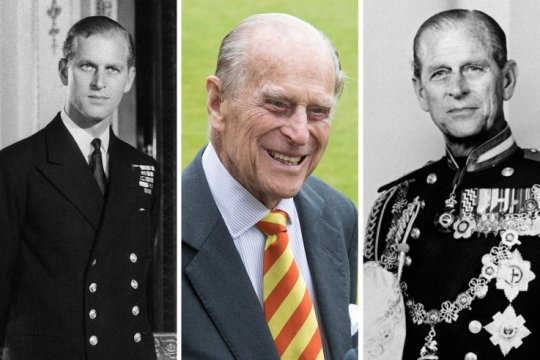
Contrary to what some might think I’m not really a fan girl when it comes to the royal family. I don’t religiously follow their every movement or utterance especially as I live in Paris and therefore I don’t really care about tabloid tittle tattle. I only get to hear of anything to do with the royal family when I speak to my parents or my great aunts and uncles for whom the subject is closer to their heart because of the services my family has rendered over past generations to the monarchy and the older (and dying) tight knit social circles they travel in.
Like Walter Bagehot, I’m more interested in the monarchy as an institution and its constitutional place within the historical, social, and political fabric of Britain and its continued delicate stabilising importance to that effect. It was Walter Bagehot, the great constitutional scholar and editor the Economist magazine, who said, “The mystic reverence, the religious allegiance, which are essential to a true monarchy, are imaginative sentiments that no legislature can manufacture in any people.” In his view, a politically-inactive monarchy served the best interests of the United Kingdom; by abstaining from direct rule, the monarch levitated above the political fray with dignity, and remained a respected personage to whom all subjects could look to as a guiding light.
Even as a staunch monarchist I freely confess that there has always been this odd nature of the relationship between hereditary monarchy and a society increasingly ambivalent about the institution. To paraphrase Bagehot again, there has been too much ‘daylight’ shone onto the ‘magic’ of the monarchy because we are obsessed with personalities as celebrities.
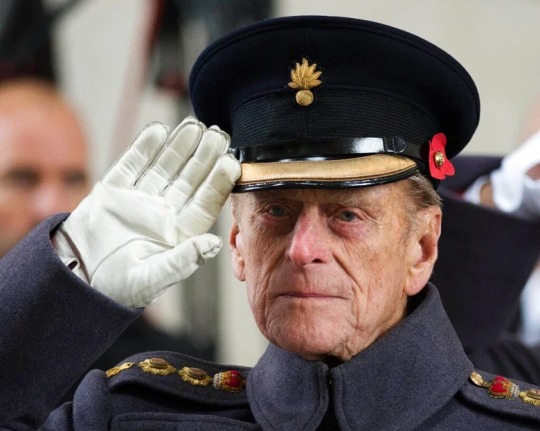
Having said that I did feel saddened by the passing of Prince Philip, the Duke of Edinburgh. After the Queen, he was my favourite royal. Anne, Princess Royal, would come next because she is very much like her father in temperament, humour, and character, so unlike her other brothers.
I have met the late Prince Philip when I was serving in the army in a few regimental meet-and-greet situations - which as you may know is pretty normal given that members of the royal family serve as honorary colonel-in-chiefs (patrons in effect) of all the British army regiments and corps.I also saw him at one or two social events such the annual charitable Royal Caledonian Ball (he’s an expert scottish reeler) and the Guards Polo Club where my older brothers played.
I’ll will freely confess that he was the one royal I could come close to identify with because his personal biography resonated with me a great deal.
Let’s be honest, the core Windsor family members, born to privilege, are conditioned and raised to be dull. Perhaps that’s a a tad harsh. I would prefer the term ‘anonymously self-effacing’, just another way of saying ‘for God’s sake don’t draw attention to yourself by saying or doing anything even mildly scandalous or political lest it invites public opprobrium and scrutiny’. The Queen magnificently succeeds in this but the others from Charles down just haven’t (with the exception of Princess Anne).
However, many people forget this obvious fact that it’s the incoming husbands and wives who marry into the Windsor family who are relied upon to bring colour and even liven things up a little. And long before Kate Middleton, Meghan Markle (very briefly), or Lady Diana Spencer, were the stars of ‘The Firm’- a phrase first coined by King George VI, Queen Elizabeth II's father who ruled from 1936 to 1952, who was thought to have wryly said, "British royals are 'not a family, we're a firm,” - it was Prince Philip who really livened things up and made the greater impact on the monarchy than any of them in the long term.
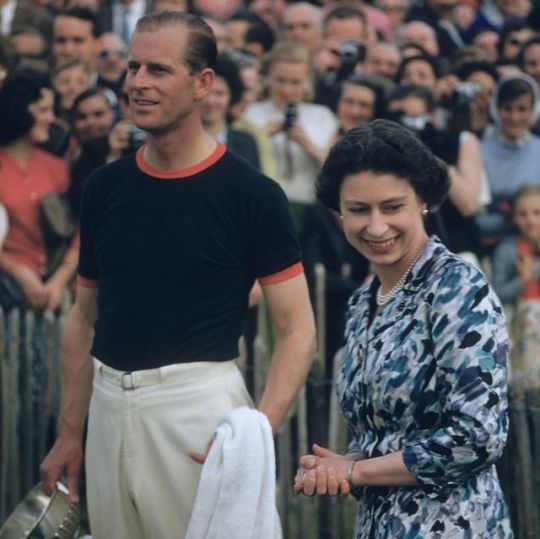
Prince Philip’s passing belied the truth of a far more complex individual: a destitute and penniless refugee Greek-Danish prince with a heart breaking backstory that could have been penned by any 19th Century novelist, and also eagle eyed reformer who tried to drag the royal family into the 20th century. At the core of the man - lost scion of a lost European royal dynasty, a courageous war veteran, and Queen’s consort - were values in which he attempted to transform and yet maintain much older inherited traditions and attitudes. Due to his great longevity, Philip’s life came to span a period of social change that is almost unprecedented, and almost no one in history viewed such a transformation from the front row.
Prince Philip would seem to represent in an acute form the best of the values of that era, which in many ways jar with today’s. He had fought with great courage in the war as a dashing young naval officer; he was regularly rude to foreigners, which was obviously a bonus to all Brits. He liked to ride and sail and shoot things. He was unsentimental almost to a comic degree, which felt reassuring at a time when a new-found emotional incontinence made many feel uncomfortable. Outrageous to some but endearing to others, he was the sort of man you’d want to go for a pint with, perhaps the ultimate compliment that an Englishman can pay to another Englishman. This has its own delicious irony as he wasn’t really an Englishman.
There are 4 takeways I would suggest in my appraisal of Prince Philip that stand out for me. So let me go through each one.
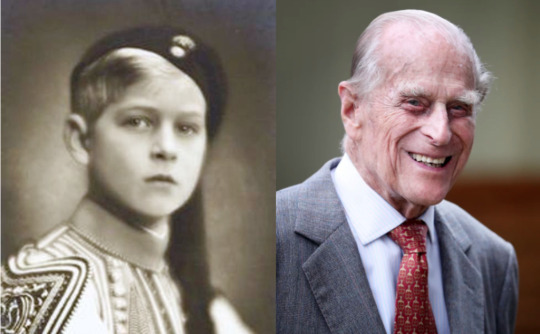
1. Prince Philip’s Internationalism
It may seem odd for me to say that Prince Philip wasn’t English but he wasn’t an Englishman in any real sense. He was a wretch of the world - stateless, homeless, and penniless. That the Prince of Nowhere became the British Monarchy’s figurehead was more than fitting for a great age of migration and transition in which the Royal Family survived and even flourished. That he was able to transform himself into the quintessential Englishman is testimony not just to his personal determination but also to the powerful cultural pull of Britishness.
He was born on a kitchen table in Corfu in June 1921. A year later in 1922, Philip, as the the great-great-grandson of Queen Victoria and nephew of Constantine I of Greece, was forced to flee with his family after the abdication of Constantine. He grew up outside Paris speaking French; ethnically he was mostly German although he considered himself Danish, his family originating from the Schleswig border region. He was in effect, despite his demeanour of Royal Navy officer briskness, a citizen of nowhere in an age of movement. From a very young age he was a stateless person, nationally homeless. Indeed, Philip was an outsider in a way that even Meghan Markle could never be; at his wedding in 1947, his three surviving sisters and two brothers-in-law were not permitted to attend because they were literally Britain’s enemies, having fought for the Germans. A third brother-in-law had even been in the SS, working directly for Himmler, but had been killed in the conflict.
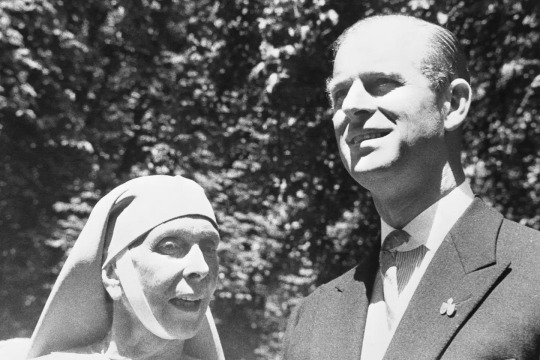
Even his religion was slightly exotic. He was Greek Orthodox until he converted to Anglicanism on marrying Elizabeth - what with his wife due to become supreme head of the Church and everything - but his ties with eastern Christianity remained. His great-aunts Princess Elisabeth of Hesse and by Rhine and Tsarina Alexandra are both martyrs of the Russian Orthodox Church, having been murdered by the Bolsheviks; Philip’s mother went on to become an Orthodox nun and a “Righteous Among the Nations” for saving a Jewish family during the Nazi occupation of Greece, spending much of her time in squalid poverty.
His parents were part of the largely German extended aristocracy who ruled almost all of Europe before it all came crashing down in 1918. When he died, aged 99, it marked a near-century in which all the great ideological struggles had been and gone; he had been born before the Soviet Union but outlived the Cold War, the War on Terror and - almost - Covid-19.
The world that Philip was born into was a far more violent and dangerous place than ours. In the year he was born, Irish rebels were still fighting Black and Tans; over the course of 12 months the Spanish and Japanese prime ministers were assassinated, there was a coup in Portugal and race riots in the United States. Germany was rocked by violence from the far-Left and far-Right, while in Italy a brutal new political movement, the Fascists, secured 30 seats in parliament, led by a trashy journalist called Benito Mussolini.
The worst violence, however, took place in Greece and Turkey. Following the defeat of the Ottoman Empire, what remained of Turkey was marked for permanent enfeeblement by the Allies. But much to everyone’s surprise the country’s force were roused by the brilliant officer Mustafa Kemal, who led the Turks to victory. Constantinople was lost to Christendom for good and thousands of years of Hellenic culture was put to the flames in Smyrna.
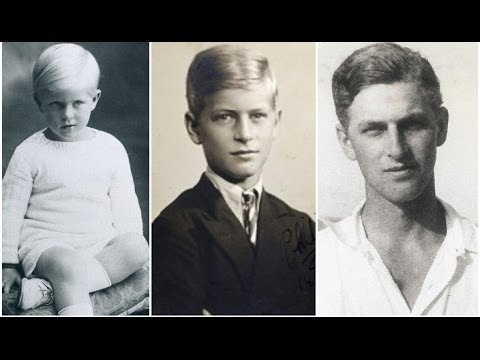
The Greek royal family, north German imports shipped in during the 19th century, bore much of the popular anger for this disaster. King Constantine fled to Italy, and his brother Andrew was arrested and only escaped execution through the intervention of his relative Britain’s George V. Andrew’s wife Alice, their four daughters and infant son Philip fled to France, completely impoverished but with the one possession that ensures that aristocrats are never truly poor: connections.
Philip had a traumatic childhood. He was forged by the turmoil of his first decade and then moulded by his schooling. His early years were spent wandering, as his place of birth ejected him, his family disintegrated and he moved from country to country, none of them ever his own. When he was just a year old, he and his family were scooped up by a British destroyer from his home on the Greek island of Corfu after his father had been condemned to death. They were deposited in Italy. One of Philip's first international journeys was spent crawling around on the floor of the train from an Italian port city, "the grubby child on the desolate train pulling out of the Brindisi night," as his older sister Sophia later described it.
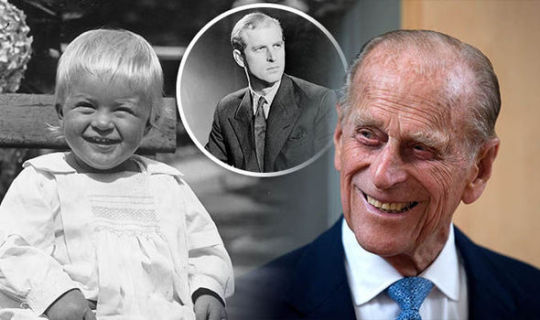
In Paris, he lived in a house borrowed from a relative; but it was not destined to become a home. In just one year, while he was at boarding school in Britain, the mental health of his mother, Princess Alice, deteriorated and she went into an asylum; his father, Prince Andrew, went off to Monte Carlo to live with his mistress. "I don't think anybody thinks I had a father," he once said. Andrew would die during the war. Philip went to Monte Carlo to pick up his father's possessions after the Germans had been driven from France; there was almost nothing left, just a couple of clothes brushes and some cuff-links.
Philip’s four sisters were all much older, and were soon all married to German aristocrats (the youngest would soon die in an aeroplane crash, along with her husband and children). His sisters became ever more embroiled in the German regime. In Scotland going to Gordonstoun boarding school, Philip went the opposite direction, becoming ever more British. Following the death of his sister Cecilie in a plane crash in 1937, the gulf widened. As the clouds of conflict gathered, the family simply disintegrated. With a flash of the flinty stoicism that many would later interpret, with no little justification, as self-reliance to the point of dispassion, the prince explained: “It’s simply what happened. The family broke up… I just had to get on with it. You do. One does.”
In the space of 10 years he had gone from a prince of Greece to a wandering, homeless, and virtually penniless boy with no-one to care for him. He got through it by making a joke of everything, and by being practical.
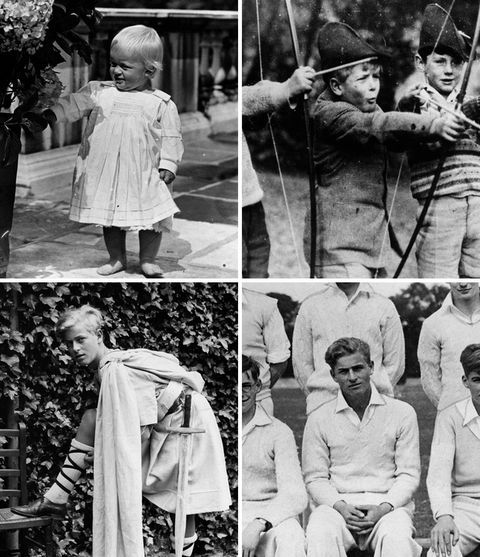
By the time he went to Gordonstoun, a private boarding school on the north coast of Scotland, Philip was tough, independent and able to fend for himself; he'd had to be. Gordonstoun would channel those traits into the school's distinct philosophy of community service, teamwork, responsibility and respect for the individual. And it sparked one of the great passions of Philip's life - his love of the sea. It was Gordonstoun that nurtured that love through the maturation of his character.
Philip adored the school as much as his son Charles would despise it. Not just because the stress it put on physical as well as mental excellence - he was a great sportsman. But because of its ethos, laid down by its founder Kurt Hahn, a Jewish exile from Nazi Germany.
Hahn first met Philip as a boy in Nazi Germany. Through a connection via one of his sister’s husbands, Philip, the poor, lonely boy was first sent off to a new school - in Nazi Germany. Which was as fun as can be imagined. Schloss Salem had been co-founded by stern educator called Kurt Hahn, a tough, discipline-obsessed conservative nationalist who saw civilisation in inexorable decline. But by this stage Hahn, persecuted for being Jewish in Nazi Germany, had fled to Britain, and Philip did not spend long at the school either, where pressure from the authorities was already making things difficult for the teachers. Philip laughed at the Nazis at first, because their salute was the same gesture the boys at his previous school had to make when they wanted to go to the toilet, but within a year he was back in England, a refugee once again.
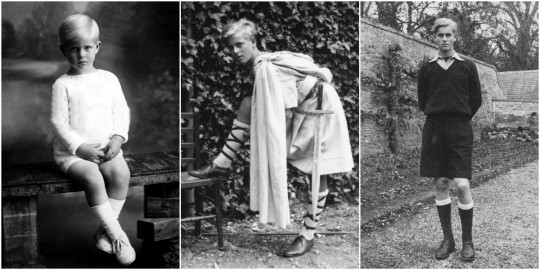
Philip happily attended Hahn’s new school, Gordonstoun, which the strict disciplinarian had set up in the Scottish Highlands. Inspired by Ancient Sparta, the boys (and then later girls) had to run around barefoot and endure cold showers, even in winter, the whole aim of which was to drive away the inevitable civilisational decay Hahn saw all around him. To 21st century ears it sounds like hell on earth, yet Philip enjoyed it, illustrating just what a totally alien world he came from.
That ethos became a significant, perhaps the significant, part of the way that Philip believed life should be lived. It shines through the speeches he gave later in his life. "The essence of freedom," he would say in Ghana in 1958, "is discipline and self-control." The comforts of the post-war era, he told the British Schools Exploring Society a year earlier, may be important "but it is much more important that the human spirit should not be stifled by easy living". And two years before that, he spoke to the boys of Ipswich School of the moral as well as material imperatives of life, with the "importance of the individual" as the "guiding principle of our society".
It was at Gordonstoun one of the great contradictions of Philip's fascinating life was born. The importance of the individual was what in Kurt Hahn's eyes differentiated Britain and liberal democracies from the kind of totalitarian dictatorship that he had fled. Philip put that centrality of the individual, and individual agency - the ability we have as humans to make our own moral and ethical decisions - at the heart of his philosophy.
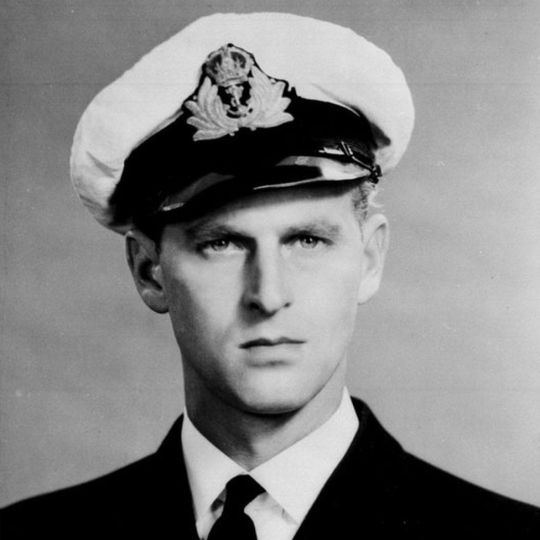
At Dartmouth Naval College in 1939, the two great passions of his life would collide. He had learned to sail at Gordonstoun; he would learn to lead at Dartmouth. And his driving desire to achieve, and to win, would shine through. Despite entering the college far later than most other cadets, he would graduate top of his class in 1940. In further training at Portsmouth, he gained the top grade in four out of five sections of the exam. He became one of the youngest first lieutenants in the Royal Navy.
The navy ran deep in his family. His maternal grandfather had been the First Sea Lord, the commander of the Royal Navy; his uncle, "Dickie" Mountbatten, had command of a destroyer while Philip was in training. In war, he showed not only bravery but guile. It was his natural milieu. "Prince Philip", wrote Gordonstoun headmaster Kurt Hahn admiringly, "will make his mark in any profession where he will have to prove himself in a trial of strength".
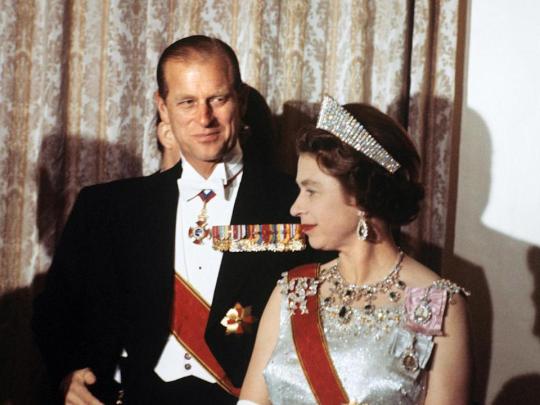
2. Prince Philip and the modernisation of the monarchy
In his own words, the process of defining what it meant to be a royal consort was one of “trial and error.” Speaking with BBC One’s Fiona Bruce in 2011, Philip explained, “There was no precedent. If I asked somebody, 'What do you expect me to do?' they all looked blank. They had no bloody idea, nobody had much idea.” So he forged for himself a role as a moderniser of the monarchy.
He could not have had much idea back in 1939. Back then in Dartmouth in 1939, as war became ever more certain, the navy was his destiny. He had fallen in love with the sea itself. "It is an extraordinary master or mistress," he would say later, "it has such extraordinary moods." But a rival to the sea would come.
When King George VI toured Dartmouth Naval College, accompanied by Philip's uncle, he brought with him his daughter, Princess Elizabeth. Philip was asked to look after her. He showed off to her, vaulting the nets of the tennis court in the grounds of the college. He was confident, outgoing, strikingly handsome, of royal blood if without a throne. She was beautiful, a little sheltered, a little serious, and very smitten by Philip.
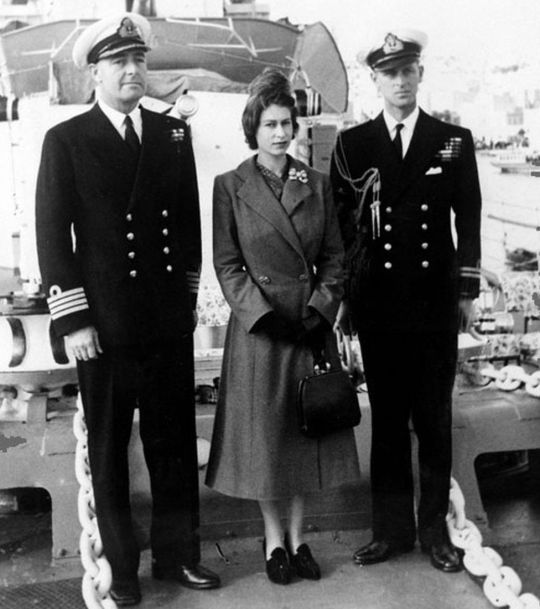
Did he know then that this was a collision of two great passions? That he could not have the sea and the beautiful young woman? For a time after their wedding in 1948, he did have both. As young newlyweds in Malta, he had what he so prized - command of a ship - and they had two idyllic years together. But the illness and then early death of King George VI brought it all to an end.
He knew what it meant, the moment he was told. Up in a lodge in Kenya, touring Africa, with Princess Elizabeth in place of the King, Philip was told first of the monarch's death in February 1952. He looked, said his equerry Mike Parker, "as if a ton of bricks had fallen on him". For some time he sat, slumped in a chair, a newspaper covering his head and chest. His princess had become the Queen. His world had changed irrevocably.
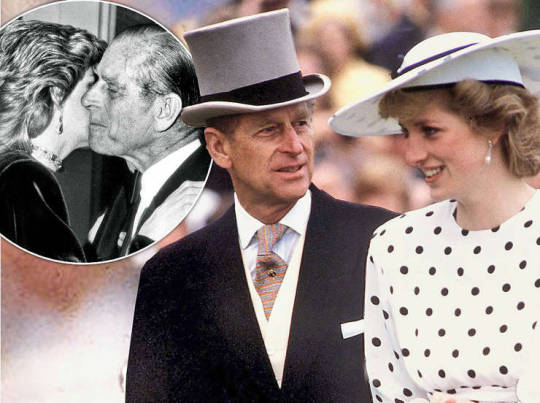
While the late Princess Diana was later to famously claim that there were “three people” in her marriage - herself, Prince Charles and Camilla - there were at least 55 million in Philip and Elizabeth’s. As Elizabeth dedicated her life to her people at Westminster Abbey at the Coronation on June 2, 1953, it sparked something of an existential crisis in Philip. Many people even after his death have never really understood this pivotal moment in Philip’s life. All his dreams of being a naval officer and a life at sea as well as being the primary provider and partner in his marriage were now sacrificed on the altar of duty and love.
With his career was now over, and he was now destined to become the spare part. Philip, very reasonably, asked that his future children and indeed his family be known by his name, Mountbatten. In effect he was asking to change the royal family’s name from the House of Windsor to the House of Mountbatten. But when Prime Minister Winston Churchill got wind of it as well as the more politically agile courtiers behind the Queen, a prolonged battle of wits ensued, and it was one Philip ultimately lost. It was only in 1957 that he accepted the title of “Prince.”
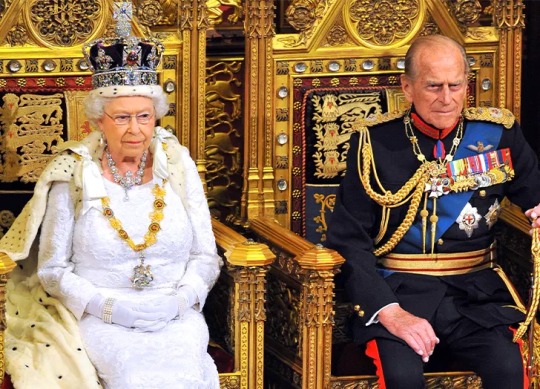
Even though he had almost lost everything dear to him and his role now undefined, he didn’t throw himself a pity party. He just got on with it. Philip tried to forge his own distinct role as second fiddle to the woman who had come to represent Great Britain. He designated himself the First Officer of the Good Ship Windsor. He set about dusting off some of the cobwebs off the throne and letting some daylight unto the workings of the monarchy by advocating reasonable amount of modernisation of the monarchy.
He had ideas about modernising the royal family that might be called “improving optics” today. But in his heart of hearts he didn’t want the monarchy to become a stuffy museum piece. He envisaged a less stuffy and more popular monarchy, relevant to the lives of ordinary people. Progress was always going to be incremental as he had sturdy opposition from the old guard who wanted to keep everything as it was, but nevertheless his stubborn energy resulted in significant changes.
When a commission chaired by Prince Philip proposed broadcasting the 1953 investiture ceremony that formally named Elizabeth II as queen on live television, Prime Minister Winston Churchill reacted with outright horror, declaring, “It would be unfitting that the whole ceremony should be presented as if it were a theatrical performance.” Though the queen had initially voiced similar concerns, she eventually came around to the idea, allowing the broadcast of all but one segment of the coronation. Ultimately, according to the BBC, more than 20 million people tuned in to the televised ceremony - a credit to the foresight of Philip.
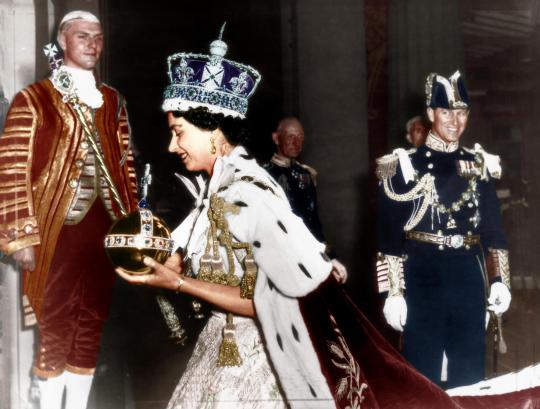
Elizabeth’s coronation marked a watershed moment for a monarchy that has, historically, been very hands off, old-fashioned and slightly invisible. Over the following years, the royals continued to embrace television as a way of connecting with the British people: In 1957, the queen delivered her annual Christmas address during a live broadcast. Again, this was Philip’s doing when he cajoled the Queen to televise her message live. He even helped her in how to use the teleprompter to get over her nerves and be herself on screen.
Four years later, in 1961, Philip became the first family member to sit for a television interview. It is hard for us to imagine now but back then it was huge. For many it was a significant step in modernising the monarchy.
Though not everything went to plan. Toward the end of the decade, the Windsors even invited cameras into their home. A 1969 BBC fly-on-the-wall documentary, instigated by Philip to show life behind the scenes, turned into an unmitigated disaster: “The Windsors” revealed the royals to be a fairly normal, if very rich, British upper-class family who liked barbecues, ice cream, watching television and bickering. The mystery of royalty took a hit below the waterline from their own torpedo, a self-inflicted wound from which they took a long time to recover. Shown once, the documentary was never aired again. But it had an irreversible effect, and not just by revealing the royals to be ordinary. By allowing the cameras in, Philip opened the lid to the prying eyes of the paparazzi who could legitimately argue that since the Royals themselves had sanctioned exposure, anything went. From then on, minor members of the House of Windsor were picked off by the press, like helpless tethered animals on a hunting safari.
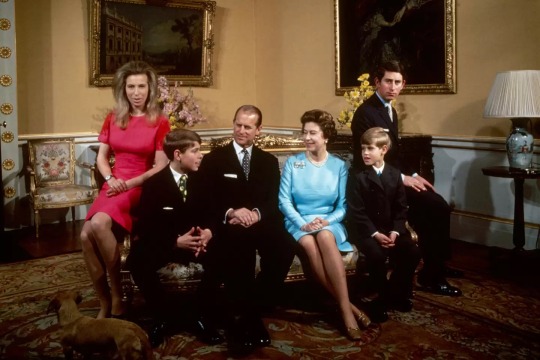
Prince Philip also took steps to reorganise and renovate the royal estates in Sandringham and Balmoral such as intercoms, modern dish washers, generally sought to make the royal household and the monarchy less stuffy, not to have so much formality everywhere.
Philip helped modernised the monarchy in other ways to acknowledge that the monarchy could be responsive to changes in society. It was Prince Philip - much to the chagrin of the haughty Princess Margaret and other stuffy old courtiers - who persuaded the Queen to host informal lunches and garden parties designed to engage a broader swath of the British public. Conversely, Prince Philip heartily encouraged the Queen (she was all for it apparently but was still finding her feet as a new monarch) to end the traditional practice of presenting debutantes from aristocratic backgrounds at court in 1952. For Philip and others it felt antiquated and out of touch with society. I know in speaking to my grandmother and others in her generation the decision was received with disbelief at how this foreign penniless upstart could come and stomp on the dreams of mothers left to clutch their pearls at the prospect there would be no shop window for their daughter to attract a suitable gentleman for marriage. One of my great aunts was over the moon happy that she never would have to go through what she saw as a very silly ceremony because she preferred her muddy wellies to high heels.
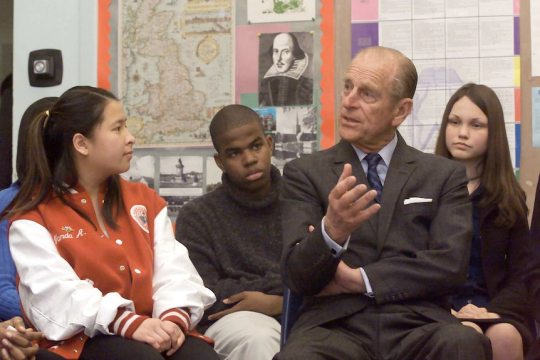
A former senior member of the royal household, who spent several years working as one of Prince Philip’s aides, and an old family friend, once told us around a family dinner table that the Duke of Edinburgh was undoubtedly given a sense of permanence by his marriage into the Royal Family that was missing from earlier years. But the royal aide would hastily add that Prince Philip, of course, would never see it that way.
Prince Philip’s attitude was to never brood on things or seek excuses. And he did indeed get on with the job in his own way - there should be no doubt that when it came to building and strengthening the Royal Family it was a partnership of equals with the Queen. Indeed contrary to Netflix’s hugely popular series ‘The Crown’ and its depiction of the royal marriage with Philip’s resentment at playing second fiddle, the prince recognised that his “first duty was to serve the Queen in the best way I could,” as he told ITV in 2011. Though this role was somewhat ill-suited to his dynamic, driven, and outspoken temperament, Philip performed it with utter devotion.
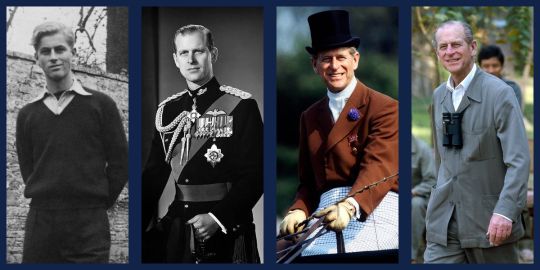
3. Prince Philip’s legacy
One could argue rightly that modernising the monarchy was his lasting legacy achievement. But he also tried to modernise a spent and exhausted Britain as it emerged from a ruinous war. When peace came, and with it eventual economic recovery, Philip would throw himself into the construction of a better Britain, urging the country to adopt scientific methods, embracing the ideas of industrial design, planning, education and training. A decade before Harold Wilson talked of the "white heat of the technological revolution", Philip was urging modernity on the nation in speeches and interviews. He was on top of his reading of the latest scientific breakthroughs and well read in break out innovations.
This interest in modernisation was only matched by his love for nature. As the country and the world became richer and consumed ever more, Philip warned of the impact on the environment, well before it was even vaguely fashionable. As president of the World Wildlife Fund (WWF) in the UK for more than 20 years from 1961, he was one of the first high-profile advocates of the cause of conservation and biological diversity at a time when it was considered the preserve of an eccentric few.
For a generation of school children in Britain and the Commonwealth though, his most lasting legacy and achievement will be the Duke of Edinburgh Awards (DofE). He set up the Duke of Edinburgh award, a scheme aimed at getting young people out into nature in search of adventure or be of service to their communities. It was a scheme that could match the legacy of Baden Powell’s scouts movement.
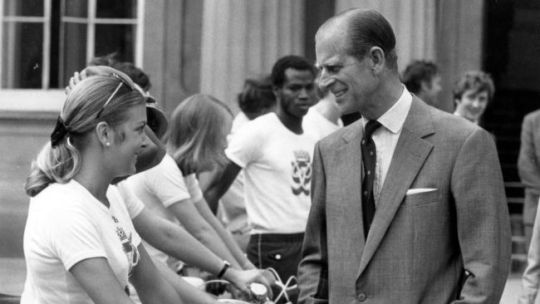
When Prince Philip first outlined his idea of a scheme to harness the values of his education at Gordonstoun by bringing character-building outdoor pursuits to the many rather than the fee-paying few, he received short shrift from the government of the day. The then minister of education, Sir David Eccles responded to the Duke’s proposal by saying: “I hear you’re trying to invent something like the Hitler Youth.” Undeterred he pushed on until it came to fruition.
I’m so glad that he did. I remember how proud I was for getting my DofE Awards while I was at boarding school. With the support of great mentors I managed to achieve my goals: collecting second-hand English books for a literacy programme for orphaned street children in Delhi, India with a close Indian school friend and her family; and completing a 350 mile hike following St. Olav’s Pilgrimmage Trail from Selånger, on the east coast of Sweden, and ending at Nidaros Cathedral in Trondheim, on the west coast of Norway.
It continues to be an enduring legacy. Since its launch in 1956, the Duke of Edinburgh awards have been bestowed upon some 2.5 million youngsters in Britain and some eight million worldwide. For a man who once referred to himself as a “Greek princeling of no consequence”, his pioneering tutelage of these two organisations (alongside some 778 other organisations of which he was either president or a patron) would be sufficient legacy for most.
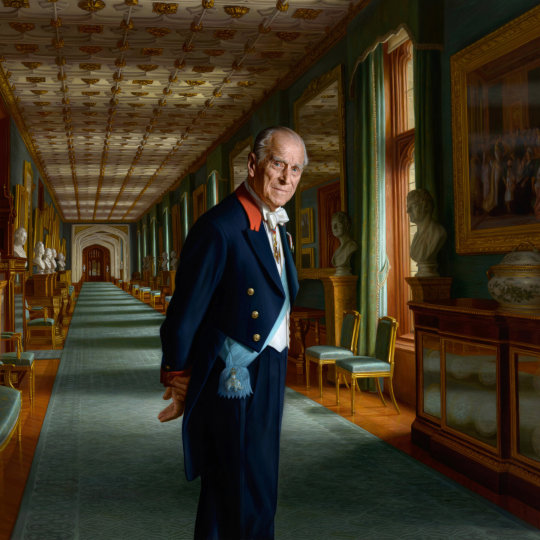
4. Prince Philip’s character
It may surprise some but what I liked most about Prince Philip was the very thing that helped him achieve so much and leave a lasting legacy: his character.
It is unhelpful to the caricature of Prince Philip as an unwavering but pugnacious consort whose chief talent was a dizzying facility in off-colour one-liners that he was widely read and probably the cleverest member of his family.
His private library at Windsor consists of 11,000 tomes, among them 200 volumes of poetry. He was a fan of Jung, TS Eliot, Shakespeare and the cookery writer Elizabeth David. As well as a lifelong fascination with science, technology and sport, he spoke fairly fluent French, painted and wrote a well received book on birds. It’s maddening to think how many underestimated his genuine intellect and how cultured he was behind the crusty exterior.
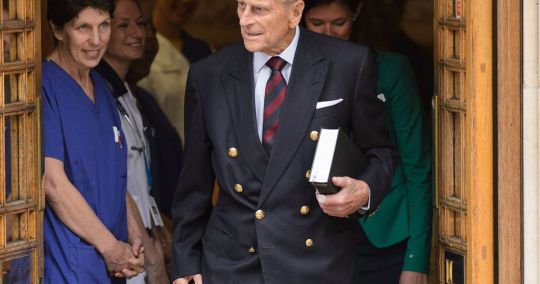
He didn’t have an entourage to fawn around him. He was the first to own a computer at Buckingham Palace. He answered his own phone and wrote and responded to his own correspondence. By force of character he fought the old guard courtiers at every turn to modernise the monarchy against their stubborn resistance.
Prince Philip was never given to self-analysis or reflection on the past. Various television interviewers tried without success to coerce him in to commenting on his legacy.But once when his guard was down he asked on the occasion of his 90th birthday what he was more proud of, he replied with characteristic bluntness: “I couldn’t care less. Who cares what I think about it, I mean it’s ridiculous.”
All of which neatly raises the profound aversion to fuss and the proclivity for tetchiness often expressed in withering put-downs that, for better or worse, will be the reflex memory for many of the Duke of Edinburgh. If character is a two edged sword so what of his gaffes?
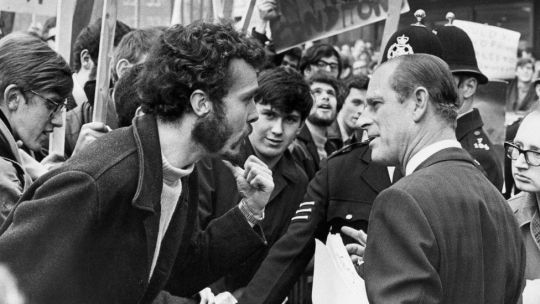
There is no doubt his cult status partly owed to his so-called legendary gaffes, of which there are enough to fill a book (indeed there is a book). But he was no racist. None of the Commonwealth people or foreign heads of state ever said this about him. Only leftist republicans with too much Twitter time on their hands screamed such a ridiculous accusation. They’re just overly sensitive snowflakes and being devoid of any humour they’re easily triggered.
There was the time that Philip accepted a gift from a local in Kenya, telling her she was a kind woman, and then adding: “You are a woman, aren’t you?” Or the occasion he remarked “You managed not to get eaten, then?” to a student trekking in Papua New Guinea. Then there was his World Wildlife Fund speech in 1986, when he said: “If it has got four legs and it is not a chair, if it has got two wings and it flies but is not an aeroplane, and if it swims and it is not a submarine, the Cantonese will eat it.” Well, he wasn’t wrong.
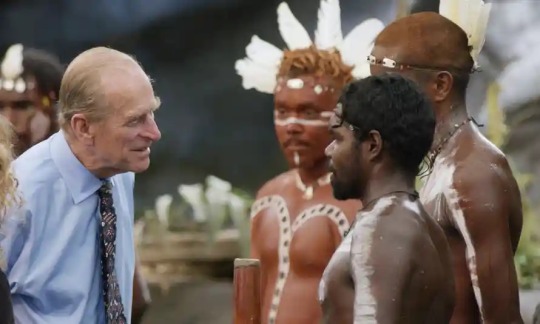
Philip quickly developed a reputation for what he once defined, to the General Dental Council, as “dentopedology – the science of opening your mouth and putting your foot in it”. Clearly he could laugh at himself as he often did as an ice breaker to put others at ease.
His remarking to the president of Nigeria, who was wearing national dress, “You look like you’re ready for bed”, or advising British students in China not to stay too long or they would end up with “slitty eyes”, is probably best written off as ill-judged humour. Telling a photographer to “just take the fucking picture” or declaring “this thing open, whatever it is”, were expressions of exasperation or weariness with which anyone might sympathise.
Above all, he was also capable of genuine if earthy wit, saying of his horse-loving daughter Princess Anne: “If it doesn’t fart or eat hay she isn’t interested.” Many people might have thought it but few dared say it. If Prince Philip’s famous gaffes provoked as much amusement as anger, it was precisely because they seem to give voice to the bewilderment and pent-up frustrations with which many people viewed the ever-changing modern world.
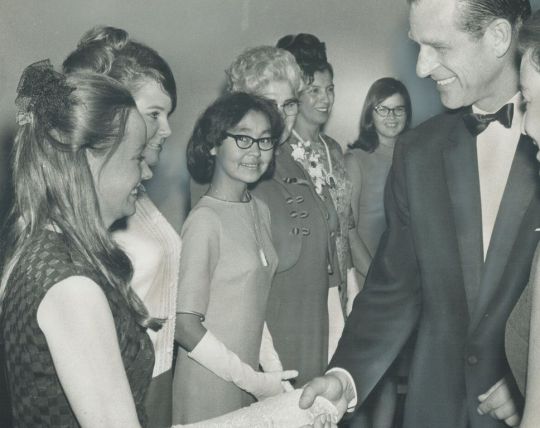
A former royal protection officer recounts how while on night duty guarding a visiting Queen and consort, he engaged in conversation with colleagues on a passing patrol. It was 2am and the officer had understood the royal couple to be staying elsewhere in the building until a window above his head was abruptly slammed open and an irate Prince Philip stuck his head out of the window to shout: “Would you fuck off!” Without another word, he then shut the window.
The Duke at least recognised from an early age that he was possessed of an abruptness that could all too easily cross the line from the refreshingly salty to crass effrontery.
One of his most perceptive biographers, Philip Eade, recounted how at the age of 21 the prince wrote a letter to a relation whose son had recently been killed in combat. He wrote: “I know you will never think much of me. I am rude and unmannerly and I say things out of turn which I realise afterwards must have hurt someone. Then I am filled with remorse and I try to put matters right.”
In the case of the royal protection officer, the Duke turned up in the room used by the police officers when off duty and said: “Terribly sorry about last night, wasn’t quite feeling myself.”
Aides have also ventured to explain away some of their employer’s more outlandish remarks - from asking Cayman islanders “You are descended from pirates aren’t you?” to enquiring of a female fashion writer if she was wearing mink knickers - as the price of his instinctive desire to prick the pomposity of his presence with a quip to put others at ease.
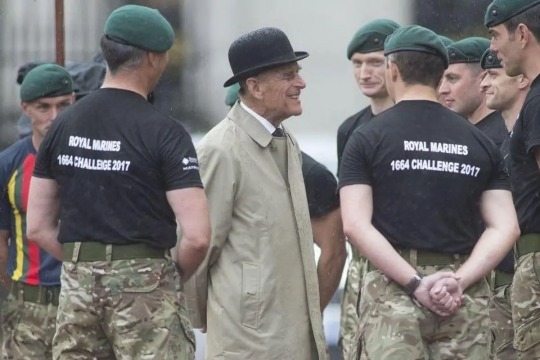
Indeed many people forget that his ‘gaffes’ were more typical of the clubbish humour of the British officer class – which of course would be less appreciated, sometimes even offensive, to other ears. It’s why he could relate so well to veterans who enjoyed his bonhomie company immensely.
But behind the irascibility, some have argued there also lay a darker nature, unpleasantly distilled in his flinty attitude to his eldest son. One anecdote tells of how, in the aftermath of the murder of the Duke’s uncle and surrogate father, Lord Mountbatten, Philip lectured his son, who was also extremely fond of his “honorary grandfather”, that he was not to succumb to self-pity. Charles left the room in tears and when his father was asked why he had spoken to his son with so little compassion, the Duke replied: “Because if there’s any crying to be done I want it to happen within this house, in front of his family, not in public. He must be toughened up, right now.”
But here I would say that Prince Philip’s intentions were almost always sincere and in no way cruel. He has always tried to protect his family - even from their own worst selves or from those outside the family ‘firm’ who may not have their best interest at heart.
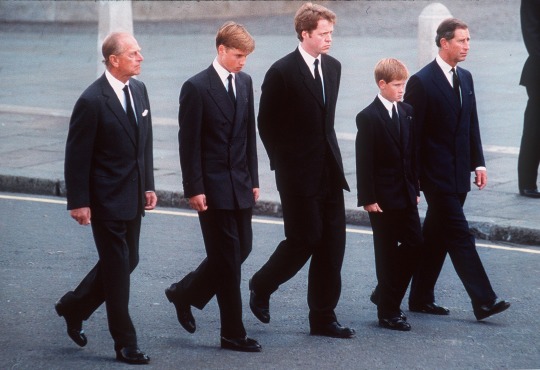
In 1937, a 16-year-old Prince Philip had walked behind his elder sister Cecile’s coffin after she was killed in a plane crash while heavily pregnant. The remains of newly-born infant found in the wreckage suggested the aircraft had perished as the pilot sought to make an emergency landing in fog as the mother entered childbirth. It was an excruciating taste of tragedy which would one day manifest itself in a very princely form of kindness that was deep down that defined Philip’s character.
When about 60 years later Prime Minister Tony Blair’s spin doctors in Downing Street tried to strong arm the Queen and the royal household over the the arrangements for the late Prince Diana’s funeral, it was Philip who stepped in front to protect his family. The Prime Minister and his media savvy spin doctors wanted the two young princes, William and Harry, to walk behind the coffin.
The infamous exchange was on the phone during a conference call between London and Balmoral, and the emotional Philip was reportedly backed by the Queen. The call was witnessed by Anji Hunter, who worked for Mr Blair. She said how surprised she was to hear Prince Philip’s emotion. ‘It’s about the boys,” he cried, “They’ve lost their mother”. Hunter thought to herself, “My God, there’s a bit of suffering going on up there”.’
Sky TV political commentator Adam Boulton (Anji Hunter’s husband) would write in his book Tony’s Ten Years: ‘The Queen relished the moment when Philip bellowed over the speakerphone from Balmoral, “Fuck off. We are talking about two boys who have just lost their mother”. Boulton goes on to say that Philip: ‘…was trying to remind everyone that human feelings were involved. No 10 were trying to help the Royals present things in the best way, but may have seemed insensitive.’

In the end the politicians almost didn’t get their way. Prince Philip stepped in to counsel his grandson, Prince William, after he had expressed a reluctance to follow his mother’s coffin after her death in Paris. Philip told the grieving child: “If you don’t walk, I think you’ll regret it later. If I walk, will you walk with me?”
It’s no wonder he was sought as a counsellor by other senior royals and especially close to his grandchildren, for whom he was a firm favourite. His relationship with Harry was said to have become strained, however, following the younger Prince’s decision to reject his royal inheritance for a life away from the public eye in America with his new American wife, Meghan Markle. For Prince Philip I am quite sure it went against all the elder Prince had lived his life by - self-sacrifice for the greater cause of royalty.
This is the key to Philip’s character and in understanding the man. The ingrained habits of a lifetime of duty and service in one form or another were never far away.
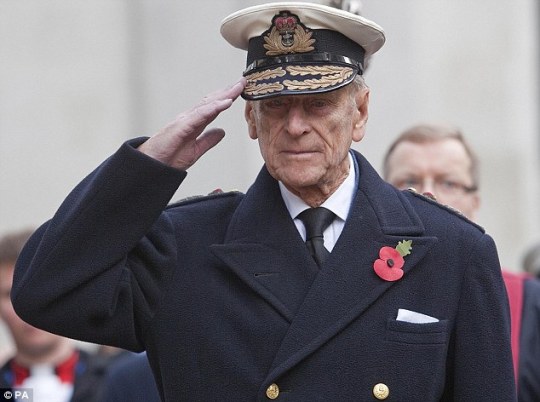
In conclusion then....
After more time passes I am sure historians will make a richer reassessment of Prince Philip’s life and legacy. Because Prince Philip was an extraordinary man who lived an extraordinary life; a life intimately connected with the sweeping changes of our turbulent 20th Century, a life of fascinating contrast and contradiction, of service and some degree of solitude. A complex, clever, eternally restless man that not even the suffocating protocols of royalty and tradition could bind him.
Although he fully accepted the limitations of public royal service, he did not see this as any reason for passive self-abnegation, but actively, if ironically, identified with his potentially undignified role. It is this bold and humorous embrace of fated restriction which many now find irksome: one is no longer supposed to mix public performance with private self-expression in quite this manner.
Yet such a mix is authentically Socratic: the proof that the doing of one’s duty can also be the way of self-fulfilment. The Duke’s sacrifice of career to romance and ceremonial office is all the more impressive for his not hiding some annoyance. The combination of his restless temperament and his deeply felt devotion to duty found fruitful expression; for instance, in the work of Saint George’s House Windsor - a centre and retreat that he created with Revd. Robin Woods - in exploring religious faith, philosophy, and contemporary issues.
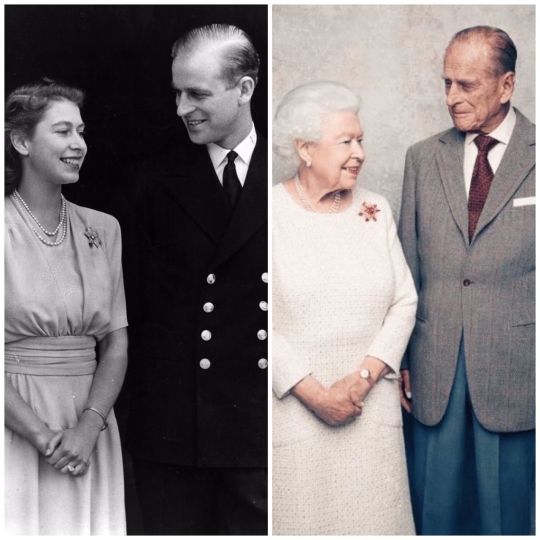
Above all he developed a way to be male that was both traditional and modern. He served one woman with chivalric devotion as his main task in life while fulfilling his public engagements in a bold and active spirit. He eventually embraced the opportunity to read and contemplate more. And yet, he remained loyal to the imperatives of his mentor Kurt Hahn in seeking to combine imagination with action and religious devotion with practical involvement.
Prince Philip took more pride in the roles he had accidentally inherited than in the personal gifts which he was never able fully to develop. He put companionship before self-realisation and acceptance of a sacred symbolic destiny before the mere influencing of events. In all these respects he implicitly rebuked our prevailing meritocracy which over-values officially accredited attainment, and our prevailing narcissism which valorises the assertion of discrete identities.
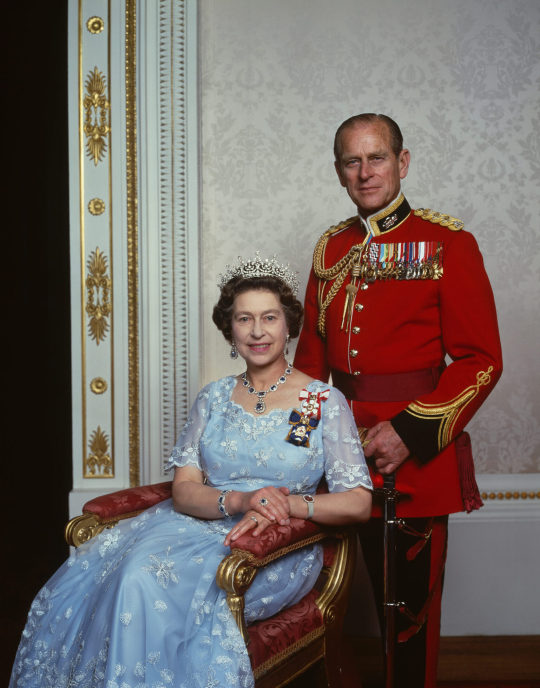
Prince Philip was Britain’s longest-serving consort. He was steadfast, duty driven, and a necessary adjunct to the continuity and stability of the Queen and the monarchy. Of all the institutions that have lost the faith of the British public in this period - the Church, Parliament, the media, the police - the Monarchy itself has surprisingly done better than most at surviving, curiously well-adapted to a period of societal change and moral anarchy. The House of Hanover and later Saxe-Coburg and Gotha (changed to Windsor), since their arrival in this country in 1714, have been noted above all for their ability to adapt. And just as they survived the Victorian age by transforming themselves into the bourgeoise, domestic ideal, so they have survived the new Elizabethan era (Harry-Meghan saga is just a passing blip like the Edward-Wallis Simpson saga of the 1930s).
There was once a time when the Royal’s German blood was a punchline for crude and xenophobic satirists. Now it is the royals who are deeply British while the country itself is increasingly cosmopolitan and globalised. British society has seen a greater demographic change than the preceding four or five thousand years combined, the second Elizabethan age has been characterised more than anything by a transformational movement of people. Prince Philip, the Greek-born, Danish-German persecuted and destitute wanderer who came to become one of the Greatest Britons of the past century, perhaps epitomised that era better than anyone else. And he got through it by making a joke of everything, and by being practical.
I hope I don’t exaggerate when I say that in our troubled times over identity, and our place and purpose in the world, we need to heed his selfless example more than ever.
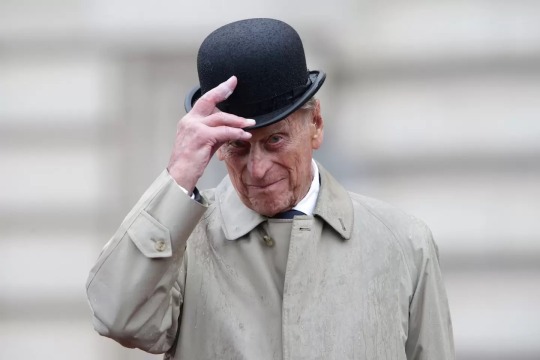
As Heraclitus wisely said, Ήθος ανθρώπω δαίμων (Character is destiny.)
RIP Prince Philip. You were my prince. God damn you, I miss you already.
Thanks for your question.
#question#ask#prince philip#duke of edinburgh#queen elizabeth II#the queen of spades#monarchy#britain#british#royalty#politics#history#culture#europe#crown#icon#great briton#society
285 notes
·
View notes
Text
How was the Ottoman Empire housed and governed by so many nations? Did he act equally or more segregated?
Muhammed Akif ÇINAR
This article explores the main ideas of the Millet system. "Millet", which derived from the Arabic word "Mille", is translated as a nation in English. This term has been used to describe any nations as well as non-Muslims. Unlike the word millet used today in the Ottoman Empire, it has a linguistic meaning, not religious. In addition, the millet system was in favor of harmonization of family and society.
Key Words: Ottoman, Millet, Turk, Nation, Mille, Cemaat, Dhimmi ,Tanzimat
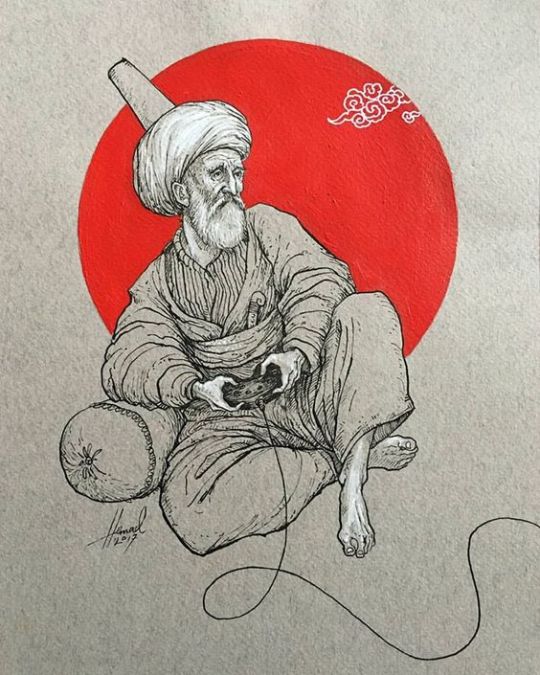
The Ottoman Empire (1299-1923) managed to become one of the leading empires in the world over the centuries. Ottoman sultans continued the conquests and enriched the lands of the empire (especially Yavuz Sultan Selim (Osmanlı Tarihi Interaktif (Türk Tarih Kurumu Yayınları XXXI. Dizi-Sa.2))). As a result of the expanding lands, many ethnic and religious communities lived under Ottoman rule. The fact that the Ottoman Empire managed to provide these communities with a peaceful coexistence has attracted the attention of many scholars. In fact, the millet system was an extraordinary and influential policy in the historical context of the Ottoman Empire. Thanks to this government system, non-Muslim and non-Turkish elements of Ottoman society were able to live a peaceful and egalitarian social system. In this respect, it would not be wrong to claim that the millet system was the key to the social and political order of the Ottoman Empire. In the heterogeneous Ottoman Empire , a millet was an autonomous self-governing religious community, each organized under its own laws and headed by a religious leader, who was responsible to the central government for the fulfillment of millet responsibilities and duties, particularly those of paying taxes and maintaining internal security.[1]
The Term
The term millet, which originates from the Arabic milla, had three basic meanings in Ottoman Turkish: religion, religious community and nation. [2] The first sense derives from Quranic usage and is attested in Ottoman administrative documents into the 19th century. [3] Benjamin Braude has argued that before the period of 19th-century Tanzimat reforms, the word millet in the sense of religious community denoted the Muslim religious community or the Christians outside of the Ottoman Empire.[4] (The Tanzimat was a period of reform in the Ottoman Empire that began in 1839 and ended with the First Constitutional Era in 1876) This view is supported by Donald Quataert. [5] In contrast, Michael Ursinus writes that the word was used to refer to non-Muslim subjects of the Ottoman Empire even before that time. The term was used inconsistently prior to the 19th century.
The systematic use of millet as designation for non-Muslim Ottoman communities dates from the reign of Sultan Mahmud II. (r.1808—1839, was the 30’th Sultan of the Ottoman Empire.) in the early 19th century, when official documentation came to reiterate that non-Muslim subjects were organized into three officially sanctioned millets: Greek Orthodox, Armenian and Jewish. [6] The bureaucrats of this era asserted that the millet system was a tradition dating back to the reign of Sultan Mehmed I (r. 1413–1421). Many historians have accepted this claim and assumed that a millet system of this form existed since early Ottoman times. The Ottoman state used religion rather than ethnicity to define each nation, and people who study the Ottoman Empire do not define the Muslims as being in a millet.[7] The Armenian, Greek, and Jewish residents did not use the word "millet" and instead described themselves as nations (French: nation, Armenian: azg, Greek: ethnos, and Latino: nasyon). The lack of use of the word "millet" among the Christian and Jewish minorities reflected in versions of the Ottoman Constitution in their respective languages: The French version of the Ottoman Constitution used the word "communauté" in the place of "millet".
‘’The millet system is closely linked to Islamic rules on the treatment of non−Muslim minorities living under Islamic dominion (dhimmi).’’[8] ‘’The Ottoman term specifically refers to the separate legal courts pertaining to personal law under which minorities were allowed to rule themselves (in cases not involving any Muslim) with fairly little interference from the Ottoman government.’’[9]
According to the concept of the nation (until the modern age, except in the Armenian case) people were attached to millets by their religious affiliation rather than their ethnic origin, millets had a great power - they set and collect their own laws. and distributing its own taxes. All that was required was loyalty to the Empire. When a member of the nation committed a crime against another member of the other, the law of the injured party was valid, but when the ruling Islamic majority was the most important issue, any dispute involving a Muslim would fall under sharia law.
In the 19th century, the perception of the nation changed in the Ottoman Empire with the effect of the nationalism movement..
The Features Of Millet System
Ottoman social order is an order based on differences This mosaic model of society is shaped according to differences in belief and protected by law. This model has a pluralistic quality in socio-cultural and religious plan. This pluralism in the Ottoman Empire was understood and applied in the way of preserving and maintaining differences. According to this, in the Ottoman Empire, various religious and cultural segments of the society would come together, but they would not cease to be themselves, each group would preserve their own religion, language, ideas and way of life (Oğuzoğlu, 1999). This multiculturalism in the Ottoman Empire well forms the basis. Accordingly, the Ottoman nation organization, after the region's participation in Darü'l-Islam, an organization that was born when the people of the book (ahl-i zimmet (Zimmet , which means "treaty, pledge, commitment, trust, assurance" in the dictionary, is used in the Quran as "obligation arising from treaty and treaty)) came under the administration of the Islamic state with a covenant granting law and protection is a legal entity[10] . During the foundation years of Islam, one of the basic principles of the Islamic state .It was the Ottomans who developed this system, which emerged as one and based on the understanding of "ummah" and implemented it in the best way.
The Ottomans developed this system, which they inherited from the previous Turkish-Islamic states, and established an administration dependent on this system in the countries they dominated. (Ortaylı, 2002). Since the protection of differences was essential in the Ottoman millet system, the cultural and national integration policy aimed at making differences similar was never implemented. (GÜRKAYNAK, 2003) The basic policy on this issue; It is a policy based on recognizing the state authority and fulfilling its requirements as required by the agreement on Zimmet (ERYILMAZ, 1999).
The Ottoman State did not try to eliminate the differences of communities as modern nation states and colonial administrations did, but aimed to keep them alive together. Accordingly, in the millet system, each community is not only a religious community, but also an administrative commune. Apart from these, religious or sect-based works such as education, communication, social security, justice, influence, religious affairs and foundation services are left to non-Muslim communities to be carried out by the national organizations.
The Elements Forming The Millet System
During the period of Mehmet II (Fatih Sultan Mehmed Han), when the Ottoman Empire reached the status of an empire, the nation system organized by the state was initiated with the organization of churches under the control of the state. This system 'in the congregations XV. XIX century. It was called "Nation" until the end of the century. Although these non-Muslim communities are not always named as their nation in the geography, they have continued their lives with the nation system organized by the state. (Öztürk, 2014)
[11]
Although the Ottoman administration of non-Muslim subjects was not uniform until the 19th century and varied according to region and group, it is possible to identify some common patterns for earlier epochs. Christian and Jewish communities were granted a large degree of autonomy. Tax collection, education, legal and religious affairs of these communities were administered by their own leaders. This enabled the Ottomans to rule over diverse peoples with "a minimum of resistance". The Jewish community, in particular, was able to prosper under the Ottoman rule and its ranks were swelled with the arrival of Jews who were expelled from Spain. At the same time, non-Muslims were subject to several forms of discrimination and excluded from the Ottoman ruling elite .
The Orthodox Christians were included in the Rum Millet (millet-i Rûm), or the "Roman nation" conquered by Islam but enjoying a certain autonomy. It was named after Roman ("Byzantine") subjects of the Ottoman Empire, but Orthodox Greeks, Bulgarians, Albanians, Georgians, Arabs, Aromanians, Megleno-Romanians and Serbs were all considered part of the same millet despite their differences in ethnicity and language and despite the fact that the religious hierarchy was Greek dominated. Nevertheless, ethnonyms never disappeared and some form of ethnic identity was preserved as evident from a Sultan's Firman from 1680, that lists the ethnic groups on the Balkan lands as follows: Greeks (Rum), Albanians (Arnaut), Serbs (Sirf), "Vlachs" (Eflak, referring to the Aromanians and Megleno-Romanians) and Bulgarians (Bulgar).[12]
Until the 19th century, there was a single Armenian millet which served all ethnic Armenians irrespective of whether they belonged to the Armenian Apostolic Church, the Armenian Catholic Church or the Armenian Protestant Church (which was formed in the 19th century).[13]Only later did a separate Catholic millets emerge. Non-Armenians from churches which were theologically linked to the Armenian Church (by virtue of being non-Chalcedonians) were under the authority of the Armenian Patriarchate, although they maintained a separate hierarchy with their own Patriarchs. These groups included the Syriac Orthodox and the Copts.
Assyrians are referred to as 'Asuri' in the Turkish , Assyrians split by Christian sect were thus treated as separate ethnic groups for the Ottoman government. The Syriac Catholic community was recognized as its own millet . The Chaldean community was recognized as its own millet.[14]
The Syriac Orthodox community in the Ottoman Empire was for long not recognized as its own millet, but part of the Armenian millet (under the Armenian Patriarch). Then, during the Tanzimat reforms the Syriac Orthodox were granted independent status with the recognition of their own millet.[15]
Under the millet system the Jews were organized as a community on the basis of religion, alongside the other millets (e.g. Orthodox millet, Armenian millet, etc.). In the framework of the millet they had a considerable amount of administrative autonomy and were represented by the Hakham Bashi who held broad powers to legislate, judge, and enforce the laws among the Jews in the Ottoman Empire and often sat on the Sultan's divan. The Ottoman Jews enjoyed similar privileges to those of the Orthodox. The Jews, like the other millet communities of the Ottoman Empire, were still considered a people of the book and protected by the Sharia Law of Islam. However, while the Jews were not viewed in the eyes of the law to be on an equal playing field with Muslims, they were still treated relatively well at points during the Ottoman Empire.[16]
After the fall of Constantinople, the only Latin Catholic group to be incorporated into the Sultan's domain were the Genoese who lived in the Byzantine capital. Over the next decades, Turkish armies pushed into the Balkans, overrunning the Catholic populations of Albania, Bulgaria, Bosnia and Hungary. In the Orient, the 16th century saw the Maronites of Lebanon, the Latins of Palestine, and most of the Greek islands, which once held Latin Catholic communities, come under Turkish rule. Papal response to the loss of these communities was initially a call to the crusade, but the response from the European Catholic monarchs was weak: French interest, moreover, lay in an alliance with the Turks against the Habsburgs.[17]
The Ottoman administration was based on communal affiliation, not affiliation in accordance with the content of cellular education. In this sense, the state was accepted as the addressee, not the individual, but the groups / communities that gave the individual a social status. (Ceylan, January 2002). There were four nations (Millet-i Erbia) generally accepted in the Ottoman society. These are the Muslim nation, the Greek nation, the Armenian nation and the Jewish nation. It is named as the Muslim nation (Millet-i Hâkime) and the Armenian nation as (Millet-i Sadıka). This name given to the Armenians must be due to their loyalty. The elements that make the Muslim nation exist are Turks, Arabs, Albanians, Bosnians, Berbers, Circassians, Georgians, Abaza and Chechens, according to which the Ottoman Nation organization is based not on ethnic (tribal) and linguistic affiliation, but on belonging to religion and sect. Almost all of the groups that formed the millet system in the Ottoman Empire were dependent on the outside to a certain extent, but they were under the control of their own nation administration. All kinds of responsibilities of individuals are against their own communities and nations. According to this, a non-Muslim person in the Ottoman Empire was responsible firstly to the nation administration and then to the state in matters such as administrative and financial matters.
The main purpose of dividing the society into such groups is in the rule of an empire people are not as individuals, but it is being addressed by the state as a community. While trying to protect its own interests, the empire also used this national system in its relations with its subjects. In other words, the state has ensured its sovereignty by separating these groups with clear lines. Managing the society has become easier and rational with this method, which almost creates an unchanging balance element. Because the heads of the nations, within the framework of the organization of their places of worship, were bound to the approval of the state at the highest point. Therefore, it was deemed more appropriate by the administration to have communities affiliated with it, not individuals. As a matter of fact, the Ottoman administration did not deal with non-Muslims as individuals except for the taxation tax, but as a community-nation. It is strictly forbidden to cross between these communities and nations, which form the basis of social organization. Especially the Muslim nation, whose qualities are more than others, is the most privileged in terms of this transmittance class. Because it is strictly forbidden to leave Islam within the framework of Islamic thought. In this respect, the Ottoman legal and social system strictly forbidden to leave the Muslim nation and enter into another nation.
19th century (Reformation Era)
New millets were created in the 19th century for several Uniate and Protestant Christian communities, then for the separate Eastern Orthodox Bulgarian Church, recognized as a Bulgar Millet by an Ottoman firman in 1870 and excommunicated two years later by the Greek Orthodox Patriarchate as adherents of phyletism (national or ethnic principle in church organization).In the period before World War I there were seventeen millets within the Empire.
Collopse of Millet System
The gradual decline of the central authority of the Ottoman Empire corresponded tothe increase in the influence of the Western countries on the Ottoman Empire. This influencewhich was mainly resulted from the Capitulations also had a great impact on the millet system and situation of Zımmi’s .The 19th Century reforms were direct responses to these changesand efforts to reestablish the millet system. Thus, the reforms and the collapse of the millet system should be thought in relation with nationalist separatist movements and international pressures. In order to secure the obedience of the millets and eliminate the Western influence onthem, Ottoman sultans reformed the millet system. In the previous system, Muslims and non-Muslims were treated equally and fairly in the legal affairs. However, some of the elements ofmillet system which helped preserving the diversity and identities functioned in a way which differentiates Muslims and non-Muslims. Such differentiation was not a problem in thegolden ages of Ottoman Empire. However, they constituted serious problems as the Ottomans weakened and became open to nationalist critiques. In other words, the traditional egalitariansystem was not enough to secure the order. Ottoman Empire should have provided totalequality to non-Muslims and Muslims. As confirmed by a number of historians, the major aimof this reform movement was to eliminate the status differences of non-Muslim millets andintegrate them into the Ottoman citizen category.[18]
This was only possible through creation of a new legal system which would include both Muslims and non-Muslims; and eliminate all restrictions relying on the status of non-Muslims. The reform wave was aiming to achieve this objective through integration of secular Western legal rules into Ottoman system. (Ceylan, January 2002) (ERYILMAZ, 1999) Consequently, non-Muslims were not allowed to be a part of Ottoman politics. With the Tanzimat reforms and the following fermans theequality between the two communities secured to a greater extent. The poll tax waseliminated, non-Muslims started to take part in the foreign affairs and parliament (Ortaylı, 2002) .In this era the previously mentioned de facto application of citizenship principles became a reality. Thus, in the 19 th century, both communities were called as Ottoman citizens rather than two separate communities. (ERYILMAZ, 1999) The 1856 Islahat brought further opportunities for the Millet. According to Ceylan the most important one of these new regulations was that eachmillet was asked for carrying out their own constitutional reforms. (Ceylan, January 2002) However, none of these reforms could help securing the maintenance of neither themillet system nor the Ottoman Empire.
The reforms altered the initial system and Ottomangovernmental and economic structure failed to meet the requirements of the new system. Ottoman central authority weakened to a great extent and devolution of power to the millets did not stop this weakening. In this way, a system which was a significant example of early multi-culturalism practices collapsed along with the Ottoman Empire.
It can be argued that therelative lack of success of the reforms and the resistance from both Muslim and non-Muslimmillets to the idea of change were among the major reasons behind both the weakening of the Empire and collapse of millet system.
Conclusion
It has emerged as a social/political structuring that follows the religious/sect seperation in accordance with the traditions. In this system ,non-Muslims are connected to the state through a hierarchical structuring process with tje criteria of religion/sect.
As the above mentioned discussions pointed out millet system was far from being a myth. It did not contain a total equality despite the fact that it was a significantly egalitarian system. As the era changed, and modernity values spread to the Ottoman Empire the system required to be reformed. However, neither the millet system nor the Empire could survive in the modern era.
[19]
References
*Is a 3rd year student in the Faculty of Economics and Administrative Sciences, the department of International Relations in Cyprus International University .
[1] Britannica, The Editors of Encyclopaedia. "Millet". Encyclopedia Britannica, 7 Sep. 2010, https://www.britannica.com/topic/millet-religious-group. Accessed 28 April 2021.
[2] Ursinus, M.O.H (1993). "Millet". In Bosworth, C. E.; van Donzel, E.; Heinrichs, W. P. & Pellat, Ch. (eds.). The Encyclopaedia of Islam, New Edition, Volume VII: Mif–Naz. Leiden: E. J. Brill. ISBN 978-90-04-09419-2.
[3] Ursinus, M.O.H (1993). "Millet". In Bosworth, C. E.; van Donzel, E.; Heinrichs, W. P. & Pellat, Ch. (eds.). The Encyclopaedia of Islam, New Edition, Volume VII: Mif–Naz. Leiden: E. J. Brill. ISBN 978-90-04-09419-2.
[4] Ursinus, M.O.H (1993). "Millet". In Bosworth, C. E.; van Donzel, E.; Heinrichs, W. P. & Pellat, Ch. (eds.). The Encyclopaedia of Islam, New Edition, Volume VII: Mif–Naz. Leiden: E. J. Brill. ISBN 978-90-04-09419-2.
[5] Quataert, Donald (2005). The Ottoman Empire, 1700–1922. Cambridge University Press (Kindle edition). pp. 175–176.
[6] "Millet", Bruce Masters, Encyclopedia of the Ottoman Empire, Ed. Gábor Ágoston and Bruce Alan Masters, (InfoBase Publishing, 2009), p. 383
[7] Öztürk, Fatih. "The Ottoman Millet System". pp. 71–86. - Cited: p. 72
[8] Öztürk, Fatih. "The Ottoman Millet System". pp. 71–86. - Cited: p. 72
[9] Britannica, The Editors of Encyclopaedia. "Millet". Encyclopedia Britannica, 7 Sep. 2010, https://www.britannica.com/topic/millet-religious-group. Accessed 28 April 2021.
[10] ORTAYLI, İ. 2002: “Osmanlı İmparatorluğu’nda Millet Sistemi”, Türkler, C. X, s. 216-220, Ankara
[11] Map of prevailing religions in the territories of the Ottoman Empire in the 16th century. Note that millets were not actually territorial. https://en.wikipedia.org/wiki/Millet_(Ottoman_Empire)#/media/File:OttomanMillets.jpg
[12] Minorities (Ottoman Empire/Middle East) | International Encyclopedia of the First World War (WW1)". encyclopedia.1914-1918-online.net. https://encyclopedia.1914-1918-online.net/article/minorities_ottoman_empiremiddle_east
[13] Ortaylı, İlber (2006), Son İmparatorluk Osmanlı [The Last Empire: Ottoman Empire], İstanbul: Timaş Yayınları (Timaş Press), pp. 87–89
[14] "Minorities (Ottoman Empire/Middle East) | International Encyclopedia of the First World War (WW1)". encyclopedia.1914-1918-online.net. Retrieved 7 November 2019. https://encyclopedia.1914-1918-online.net/article/minorities_ottoman_empiremiddle_east
[15] . Taylor, William (2014). Narratives of Identity: The Syrian Orthodox Church and the Church of England 1895–1914. Cambridge Scholars Publishing. pp. 84–87.
[16] Ortaylı, İlber (2006), Son İmparatorluk Osmanlı [The Last Empire: Ottoman Empire] (in Turkish), İstanbul: Timaş Yayınları (Timaş Press), pp. 87–89
[17] Religion and the Politics of Ident, Ger Duijzings, C. Hurst & Co. Publishers, 2000 p. 28.
[18] Bozkurt, Gülnihal.Alman- İngiliz Belgelerinin ve Siyasi Gelişmelerin Işığı Altında Gayrimüslim OsmanlıVatandaşlarının Hukuki Durumu (1839 -1914)
· Additional References
· [19] Millet System in Ottoman Empire : An Extraordinary Policy with Extraordinary – Yunus BOR (https://www.academia.edu/7521006/Millet_system_in_Ottoman_Empire)
· The System of Nation in Ottoman Empire; Uğur KURTARAN ; Dumlupınar Üniversitesi ; Journal of the Institute of Social Sciences Number 8, Autumn 2011, 57-71
· "Millet System in the Ottoman Empire". Oxford Bibliographies. Oxford University Press.
· Ahmet İçduygu & B. Ali Soner (2006) Turkish minority rights regime: Between difference and equality, Middle Eastern Studies, 42:3, 447 468 (https://www.academia.edu/34897204/Middle_Eastern_Studies_Turkish_minority_rights_regime_Between_difference_and_equality)
· Abdullah Özkan ; Bir Zamanlar Osmanlı ‘Padişahlar Atlası’;Boyut Yayıncılık A.Ş(2012).; pp.6-21 ISBN 978-975-23-1010-0
3 notes
·
View notes
Text
“Eleanor and Louis arrived at Antioch’s port ten miles from the city on 19 March 1148, eight months after leaving France—considerably later than they had expected to reach the Holy Land. They were welcomed warmly by the prince of Antioch, Raymond, younger brother of Eleanor’s father. He led the royal entourage to Antioch “with great pomp,” where the clergy and people were waiting to greet them. On Eleanor’s arrival in the city after the ordeal of the harrowing crossing of Anatolia, she anticipated relaxing and recovering from her hardships, swathed in luxury at Raymond’s palace.
During a ten-day sojourn as her uncle’s guest, Eleanor enjoyed the company of a number of other Poitevins who had followed Raymond to Antioch, among them his palace chaplain and some of his knights whose families she knew, as well as the patriarch of Antioch who came from Limoges. Eleanor took great delight in the company of Prince Raymond, only nine years her senior, and his sophisticated court at Antioch charmed her. The city and its palatial residences with marble columns, intricate mosaics, and rich silks called to mind the magnificence of Constantinople.
The “Franks,” as western Christians settled in the crusader states were called, had adopted Syrian manners and customs that were suitable for the local climate. They took baths and used soap, wore eastern-style clothing, ate the local dishes, including sweets flavored with sugar, and built their houses on the Syrian model with courtyards and fountains. Louis and his men recoiled from the luxurious and self-indulgent way of life they observed at Antioch, regarding it with the same scorn felt earlier for the Greeks at Constantinople. They were shocked and scandalized by Frankish settlers who “went native,” making friends with Muslim notables and occasionally even allying with them.
…In his attempt to convince Louis VII to join him in recovering Edessa, Raymond of Antioch “counted greatly on the interest of the queen with the lord king.” Raymond probably sensed Eleanor’s admiration for him, aware that she saw in him a father-figure, a reminder of her father, Duke William X. He knew how to play on his niece’s divided loyalties, appealing to her sense of family solidarity; he was her closest living male relative and a reminder of her pampered childhood at Poitiers. In addition, his entourage included a number of Poitevins, so he could arouse her concern for her kin and countrymen dwelling in this endangered Christian outpost.
He would have observed that Eleanor was a strong-minded woman. Certainly her interest in political matters had been evident from the first years of her marriage, and then Louis’s hopeless love for his bride had won him over easily to her point of view. Yet now Eleanor felt herself capable of openly disputing her husband’s policy decisions on the basis of her own judgment. Impressed by Prince Raymond’s knowledge gained from a decade’s residence in the crusader principality, she quickly grasped the wisdom of his strategy. Despite Raymond’s success in recruiting his niece to his cause, neither she nor he had any luck in shaking Louis’s determination to proceed directly to Jerusalem.
Louis VII now expected his queen to be a docile wife, submitting to him and not questioning his initiatives in public policy. Yet his indecisiveness during the difficult crossing of Anatolia already had shaken Eleanor’s confidence in his judgment, and no doubt her impatience with his austere way of living had deepened during her exhausting and frightening journey across Anatolia. She could no longer deny her unhappiness with her marriage, and she quite possibly confided this to her uncle. Her refusal to be forced into a constraining mold of wifely submissiveness became clear at Raymond’s court, and this was her actual crime at Antioch in the eyes of Louis and his entourage.
Eleanor’s impassioned and forthright support of Raymond’s plan only provoked her husband’s jealousy. When neither Raymond’s private approaches nor a council attended by both rulers’ entourages could win Louis’s support for his plan of attack, the prince’s attitude changed, and he began plotting against the French king. Eleanor announced to Louis that he could go on to Jerusalem, but she would stay in Antioch and initiate proceedings for the annulment of their marriage. The earliest source for this shocking episode, the infamous incident at Antioch that colored all succeeding assessments of Eleanor, is John of Salisbury.
…Because John’s recounting is so significant for Eleanor’s later reputation, it must be quoted: Whilst the king and queen remained [at Antioch] to console, heal and revive the survivors from the wreck of the army, the attentions paid by the prince to the queen, and his constant, indeed almost continuous, conversation with her, aroused the king’s suspicions. These were greatly strengthened when the queen wished to remain behind although the king was preparing to leave, and the prince made every effort to keep her, if the king would give her consent. And when the king made haste to tear her away, she mentioned their kinship, saying that it was not lawful for them to remain together as man and wife, since they were related in the fourth and fifth degrees.
The queen was correct about their kinship within the prohibited degrees, for it was an open secret that she and Louis shared a common ancestor. Yet it was a daring declaration for her to make, and she would not have spoken so boldly without her uncle’s support, or perhaps his urging. Raymond, angered by Louis’s contrariness, saw his niece as an instrument for revenge. No doubt during their many conversations the prince had assured his niece that as senior male of the Aquitanian ducal line he would take her under his protection should she become single again.
He knew that the choice of another spouse for her would fall to him, and her marriage could prove useful in cementing some new alliance. John of Salisbury continued, telling of the advice given to Louis VII by Thierry Galeran, a eunuch who was a trusted counselor of the king. Thierry warned Louis against allowing Eleanor to remain behind in Antioch because, quoting Ovid, “guilt under the guise of kinship could lie concealed.” The quotation can be read as a veiled reference to Eleanor’s incestuous relations with Raymond, but may be no more than a rhetorical flourish added by John, a scholar proud of his classical learning.
Thierry further warned the king that should the crusade result in the loss of his wife, by her desertion or her theft by another, it would bring lasting shame on the French kingdom. John of Salisbury took care to make no overt accusation of adultery, seeming to suggest no more than the queen’s immoderate familial affection. If he intended to hint at Eleanor’s unfaithfulness at Antioch, it is significant that he chose Thierry Galeran, as a eunuch an object of derision, whom he described as “a eunuch whom the queen had always hated and mocked.”
John comments that Thierry expressed his view “either because he hated the queen or because he really believed it, moved perchance by widespread rumour,” leaving readers free to reject his testimony as unreliable. John of Salisbury says little about Raymond’s role in this matter, other than that as the king prepared to leave Antioch “the prince made every effort to keep [Eleanor].” It is quite clear, however, that John held Raymond guilty for using the queen to pressure her husband into agreeing to his plan for battling the Turks, and for encouraging his niece’s decision to seek a separation from her husband once he had failed to influence Louis through her.
…What is important about the Antioch incident is not so much what actually happened between Eleanor and her uncle, but what her contemporaries believed or wished to believe had occurred. For John of Salisbury and his clerical contemporaries, Eleanor’s violation of the laws of marriage was not adultery with Raymond, nor her demand for an annulment of her marriage so much as her refusal to adopt the subservient role expected of a wife. She had gone against the submissiveness demanded of wives by a male-dominated Church and secular society.
Her lack of discretion and obstinate behavior in pressing for her uncle’s plan and disputing her husband’s decision-making in military matters constituted infidelity by compromising her husband’s royal dignity. It was already clear that Louis VII’s queen had achieved a place among his chief counselors and had exercised influence over him before leaving France. Clerical authors of the twelfth century could not condone such behavior in a woman: only men were considered capable of acting rationally, and when they encountered women wielding power, they attributed their actions to irrational, passionate motives, not to practical political considerations.
In their view, Eleanor was engaging in a pattern of misconduct, “a form of deliberate provocation . . . a will to manifest her independence” that they interpreted as infidelity, whether or not it amounted to outright adultery. For the queen’s clerical critics, her conduct failed to conform with the Church’s standard for the proper self-effacing role of a wife or a queen, and she acted as “a man . . . even as a king.” Equally shocking to John was Louis VII’s excessive love for Eleanor that drove him to surrender to her wishes and to agree to the separation that she desired.
This made manifest the French king’s ineffectual control over his strong-minded queen. For most medieval males, Louis’s inability to resist his wife seemed to threaten a moral and political order that defined female activity in diplomacy and politics as “unwomanly” and a husband unable to master his wife as “unmanly.” John, steeped in the Stoic philosophy revived in the twelfth-century Renaissance, held that a man must use his superior rational faculties to control his passions and attain an ideal life of moderation. He concluded that Louis’s love for his wife “almost beyond reason” showed the king’s dangerous lack of moderation in marital love, allowing passionate jealousy to overwhelm his masculine reason.
Although John of Salisbury’s condemnation of Eleanor does not imply actual adultery, rumors about the royal couple’s troubled marriage soon spread in the camps of French soldiers bitter at the crusade’s inglorious end. In the retelling of the queen’s indiscreet behavior in Raymond’s presence, “Gossiping courtiers apparently misconstrued and magnified her lively enjoyment of the visit.” Soon rumor magnified her deed from an impudent challenge to her husband’s authority, disobeying the Church’s teaching on wives’ submission to their husbands, to outright adultery with her uncle.”
- Ralph V. Turner, “Adventures and Misadventures on the Second Crusade, 1145–1149.” in Eleanor of Aquitaine: Queen of France, Queen of England
#eleanor of aquitaine#eleanor of aquitaine: queen of france queen of england#history#raymond of antioch#louis vii of france#french#medieval#high middle ages#crusades
14 notes
·
View notes
Text
TAFAKKUR: Part 433
THE MAIN FACTORS IN THE SPREAD OF ISLAM: Part 2
A. J. Arberry has also pointed out that the reason for the spread of Islam is Islam itself and its religious values. (Aspects of Islamic Civilization, p.12)
He writes:
‘The rapidity of the spread of Islam, noticeably through extensive provinces which had long been Christian, is a crucial fact of history. The sublime rhetoric of the Qur’an, that inimitable symphony, the very sounds of which move men to tears and ecstasy…and the urgency of the simple message carried, holds the key to the mystery of one of the greatest catalysms in the history of religion. When all military, political and economic factors have been exhausted, the religious impulse must still be recognized as the most vital and enduring.’
Brockelman, who is usually very unsympathetic and partial, also recognizes the religious values of Islam as the main factor for the spread of Islam (History of the Islamic Peoples, p.37). Rosenthal makes his point as follows: ‘The more important factor for the spread of Islam is the religious Law of Islam (Shari‘a, which is an inclusive, all-embracing, all-comprehensive way of thinking and living) which was designed to cover all manifestations of life.’ (Political Thought in Medieval Islam, p.21).
Besides many other reasons which are responsible for the spread of Islam, it is the exemplary life-style and unceasing efforts of individual Muslims to transmit the message of Islam throughout the world which lie at the root of the conquest of hearts by Islam. Islamic universalism is closely associated with the principle of ‘amr bi’l-ma’ruf (enjoining the good) for Islam is to be spread by Muslims by means of ‘amr bi’l-ma’ruf. This principle seeks to convey the message of Islam to all human beings in the world and to establish a model Islamic community on a worldwide basis. The Islamic community is introduced by the Qur’an as a model community: We have made of you an Ummah justly balanced, that you might be witnesses (models) for the peoples, and the Messenger has been a witness for you (2.143). A Muslim or the Muslim community as a whole thus has a goal to achieve. This is the spread of Islam, conveying the truth to the remotest corner of the world, the eradication of oppression and tyranny and the establishment of justice all over the world. This requires the Muslim to live an exemplary life, and thus the moral and the ethical values of Islam have usually played an important part in the spread of Islam. Here follow the impressions of the influence of Islamic ethics on black Africans of a Western writer of the nineteenth century:
‘As to the effects of Islam when first embraced by a Negro tribe, can there, when viewed as a whole, be any reasonable doubt? Polytheism disappears almost instantaneously; sorcery, with its attendant evils, gradually dies away; human sacrifice becomes a thing of the past. The general moral elevation is most marked; the natives begin for the first time in their history to dress, and that neatly. Squalid filth is replaced by some approach to personal cleanliness; hospitality becomes a religious duty; drunkenness, instead of the rule becomes a comparatively rare exception chastity is looked upon as one of the highest, and becomes, in fact, one of the commoner virtues. It is idleness that henceforward degrades, and industry that elevates, instead of the reverse. Offences are henceforward measured by a written code instead of the arbitrary caprice of a chieftain–a step, as everyone will admit, of vast importance in the progress of a tribe. The Mosque gives an idea of architecture at all events higher than any the Negro has yet had. A thirst for literature is created and that for works of science and philosophy as well as for the commentaries on the Qur’an.’ (Quoted from Waitz by B. Smith, Muhammad and Muhammadanism, pp.42-43)
The tolerance of Islam is another factor in the spread of Islam. Toynbee praises this tolerance towards the People of the Book after comparing it with the attitude of the Christians towards Muslims and Jews in their lands. (A Historian’s Approach to Religion, p.246). T. Link attributes the spread of Islam to the credibility of its principles together with its tolerance, persuasion and other kinds of attractions (A History of Religion). Makarios, Orthodox Patriarch of Antioch in the seventeenth century, compared the harsh treatment received by the Russians of the Orthodox Church at the hands of the Roman Catholic Poles with the tolerant attitude towards Orthodox Christians shown by the Ottoman Government and prayed for the Sultans (T. Link, A History of Religion).
This is not the only example of preference by the followers of the religions for Muslim rule over that of their own co-religionist. The Orthodox Christians of Byzantium openly expressed their preference for the Ottoman turban in Istanbul to the hats of the Catholic cardinals. Elisee Reclus, the French traveller of the nineteenth century, wrote that the Muslim Turk allowed all the followers of different religions to perform their religious duties and rituals, and that the Christian subjects of the Ottoman Sultan were more free to live their own lives than the Christians who lived in the lands under the rule of any rival Christian sect (Nouvelle Geographie Universelle, vol. 9). Popescu Ciocanel pays tribute to the Muslim Turks by stating that it was luck for the Romanian people that they lived under the government of the Turks rather than the domination of the Russians and Austrians. Otherwise, he points out, ‘no trace of the Romanian nation would have remained,’ (La Crise de l’Orient).
The Muslims’ attitude towards the people they conquered is quite clear in the instructions given by the rightly-guided Caliphs: ‘Always keep fear of God in your mind; remember that you cannot afford to do anything without His grace. Do not forget that Islam is a mission of peace and love. Keep the Holy Prophet (peace be upon him) before you as a model of bravery and piety. Do not destroy fruit-trees nor fertile fields in your paths. Be just, and spare the feelings of the vanquished. Respect all religious persons who live in hermitages or convents and spare their edifices. Do not kill civilians. Do not outrage the chastity of women and the honour of the conquered. Do not harm old people and children. Do not accept any gifts from the civil population of any place. Do not billet your soldiers or officers in the houses of civilians. Do not forget to perform your daily prayers. Fear God. Remember that death will inevitably come to every one of you some time or other, even if you are thousands of miles away from a battlefield; therefore be always ready to face death.’ (Andrew Miller, Church History; Ali lbn Abi Talib, Nahj al-Balagha)
A historical episode which Balazouri, a famous Muslim historian, relates, tells about how pleased the native peoples were with their Muslim conquerors is of great significance
When Heraclius massed his troops against the Muslims, and the Muslims heard that they were coming to meet them, they refunded the inhabitants of Hims the tribute they had taken from them, saying: ‘We are too busy to support and protect you. Take care of yourselves.’ But the people of Hims replied: ‘We like your rule and justice far better than the state of oppression and tyranny in which we were. The army of Heraclius we shall indeed, with your help, repulse from the city.’ The Jews rose and said: ‘We swear by the Torah, no governor of Heraclius shall enter the city of Hims unless we are first vanquished and exhausted.’ Saying this, they closed the gates of the city and guarded them. The inhabitants of other cities–Christians and Jews–that had capitulated did the same. When by God’s help the unbelievers were defeated and Muslims won, they opened the gates of their cities, went out with singers and players of music, and paid the tribute (Futuh al-Buldan).
To sum up, although most Western writers, under the instigation of biased Orientalists of the Church, have alleged that Islam spread by the force of the sword, the spread of Islam was because of its religious content and values, and ‘its power of appeal and ability to meet the spiritual and material needs of people adhering to cultures totally alien to their Muslim conquerors’, together with some other factors. Some of these factors are the tolerance which Islam showed to people of other religions, the absence of ecclesiastic orders and hierarchy in Islam, mental freedom and absolute justice which Islam envisages and has exercised throughout the centuries, the ethical values it propagates, and Islamic humanitarianism, universalism and brotherhood, and its inclusiveness. Sufi activities, the moral superiority of Muslim tradesmen, the principle of ‘enjoining the good’, and Islamic dynamism and the magnificence of the Islamic civilization contributed of their own to the spread of Islam.
The main religious qualities which attracted people to Islam were:
(i) the simplicity of the theological doctrines of Islam based on the Divine Unity;
(ii) rationalism of the Islamic teachings;
(iii) the complete harmony of the Islamic ideals and values with human conscience;
(iv) the inclusiveness and comprehensives of Islam, covering all aspects of physical, mental, and spiritual life of individuals and societies, hence the harmony of religion and life which it established;
(v) the lack of formalism and mediation;
(vi) the vividness, dynamism and resilience of the Islamic theology, and its creativity and universalism, and its compatibility with established scientific facts;
(vii) the cohesion and harmony of the Islamic principles, and
(viii) the shortcomings of other theological systems.
#allah#god#prophet#Muhammad#quran#ayah#sunnah#hadith#islam#muslim#muslimah#hijab#help#revert#convert#dua#salah#pray#prayer#welcome to islam#how to convert to islam#new convert#new muslim#new revert#revert help#convert help#islam help#muslim help#reminder#religion
5 notes
·
View notes
Text
Macro perspective on each Lymond book
I've been listening to the Lymond Chronicles audiobooks, which has given me a different perspective than reading them. With audiobooks, you’re less inclined to stop and dive into the details, to look up an interesting word or obscure historical fact; instead you get swept along with the larger arc of the book.
So, I thought it would be interesting to look at what each book is about from a macro perspective.
Spoilers for the entire series follow.
The Game of Kings
In genre, it's a mystery told in a historical adventure style; it asks the question "Who is Lymond?" and gives us a ton of contradictory clues, then finally reveals the truth - in a psychological sense by stripping away Lymond's defense mechanisms and revealing the human being underneath, as he breaks down in the dell, "the guard was down... every fluent line and practised shade of Lymond's face betrayed him explicitly"; and in a narrative sense via the trial, which examines each "clue" we received throughout the story and tells us what it really meant.
Thematically, it's mainly about "serving honesty in a crooked way" - that morality isn’t simple and that sometimes you need to break the rules to do the right thing. Nearly all Lymond’s acts are apparently bad things done for a goal that is actually good. We see the theme also in Will Scott (who learns that the world is more complicated than the "moral philosophy" he learned in school) and the various characters who help Lymond, breaking the rules of society by aiding a wanted outlaw (Christian, Sybilla, the Somerviles).
It is also about the balance of looking out for self vs the obligation to the greater society - Lymond is not completely selfless (after all, he is back in Scotland to clear his own name), but when forced to choose, he always chooses the greater good above his own goals. He is contrasted with Richard, whose great mistake is to put his obligations to Scotland at risk in pursuit of his personal vengeance, and Margaret Lennox, who is purely and grotesquely out only for herself.
The historical context is part of this theme, as we see the various border families playing both sides between England and Scotland, with the heroes being those who ultimately stand up for Scotland, even as we understand that some have no choice but to profess one thing while doing another.
Queens Play
In genre, it's a spy novel; thematically, it's about what Lymond will do with the rest of his life. The question is asked explicitly several times (most obviously, "You have all your life still before you." / "The popular question is, for what?") It's important that Lymond loses his title at the start of this book; he has to figure out who he will be without it.
The main characters all represent possible paths Lymond could take -
O'Liam Roe, who sits back and laughs at the world with detachment, while abdicating all responsibility to use his mind and position to change the world for the better.
Robin Stewart, who loses himself in bitterness about the ways the world has been unfair to him, and in fixating on how he deserved better, fails to take any action to improve himself.
Oonagh, who works passionately to change the world for the better, but whose ideals have become corrupted because she has attached herself to a leader who is more out for himself than for their cause.
And of course Thady Boy and Vervassal, two extremes of himself that Lymond tries on, and (by the end of the series) must learn to reconcile.
The recurring imagery of the first half is the carnival, the masks, the music, the parties, and our hero in danger of losing himself amidst the debauchery. In the second half the imagery every time Lymond appears is of ice, the ultra-controlled, hyper-competent version of Lymond at risk of losing himself by denying his artistic soul. (There’s a wonderful essay here that explores these motifs.)
In the end, Lymond comes to the conclusion that he must not withdraw into detachment or bitterness, that he must find a way to make a positive difference in the world, but that he also must not attach himself to a powerful figure who may be more out for themselves than for Scotland (ie, his refusal to attach himself to Marie de Guise). This sets up the creation of his mercenary army in the next books, as a way he can exercise independent influence in the world.
The Disorderly Knights
This book couldn't be more relevant to the world today. It's a portrait of cynical hypocrisy in pursuit of power; it lays out step by step the tactics of propaganda and manipulation used by despots to build up themselves and tear down their rivals: pretend to be pious, accuse of others of your own crimes, tear down straw men instead of engaging in real debate. It tells us to "look at his hands"; what matters is what a leader actually does, not what he professes to believe.
It shows us how leaders use charisma to manipulate, and, in showing the battle between Gabriel and Lymond for Jerott's loyalty, shows how Lymond takes the harder and more ethical path, by refusing to use his charisma to seduce (a lesson learned from his experience with Robin Stewart) and instead guiding Jerott to come to his own conclusions by means of rational thought instead of hero worship.
At every level the novel advocates for tolerance and internationalism, and against petty sectarianism, as Lymond questions whether the Knights of St John are really any better than the Turks, and as he tries to get the Scottish border families to abandon their feuds in favor of the greater good of the country.
In terms of genre, it’s a pure adventure novel. I never get bored of the masterful action sequences with the battles in Malta and Tripoli, and the extraordinary duel at St Giles in the end. (Also in terms of thematic imagery, there is some crazy S&M shit going on in this book, with Gabriel and Joleta's sadism and Lymond's self-sacrificial masochism.)
I love Disorderly Knights so much. It is nearly perfect - well structured, thematically coherent, witty, fun, breathtaking, and heartbreaking.
Pawn in Frankincense
In genre, this is a quest novel. In several places it explicitly parallels The Odyssey.
In theme, it explores -
Do the ends justify the means? How much sacrifice is too much? Lymond gives up his fortune, his body, and his health; Philippa gives up her freedom and her future; we are asked often consider, which goal is more important, stopping Gabriel or saving the child? We even see this theme in Marthe's subplot, as she gives up the treasure, her dream to "be a person," to save her companions. Perhaps the most telling moment is right after Lymond kills Gabriel; despite all his claims that Gabriel’s death mattered more than the fate of the child, he’s already forgotten it, instead playing over and over in his mind the death of Khaireddin. If you do what is intellectually right but it destroys your soul, was it really right?
The other big theme is “nature vs nurture.” What is the impact of upbringing on how people turn out? In its comparisons of Kuzum vs Khaireddin, and Lymond vs Marthe, it seems to fall firmly on the side of nurture.
It’s also a kaleidoscope of views on love, with its Pilgrims of Love and their poetry, and the contrasting images of selfless, sacrificial love (Philippa and Evangelista for Kuzum, Salablanca for Lymond, Lymond for Khaireddin, perhaps Marthe for Lymond as she helps him in the end) with possessive, needy “love” (Marthe for Guzel, Jerott for Marthe or Lymond, arguably even the Aga for Lymond).
This novel is also a tragedy. Its imagery and the historical background complement the themes by creating an atmosphere lush, beautiful, labyrinthine, overwhelming, and suffocating.
The Ringed Castle
I have to confess this is my least favorite, in large part because I find the historical sequences (in Russia and in Mary Tudor's court in England) go on way too long and have only tangential relationships to the themes and characters.
It seems to be primarily about self-delusion as a response to trauma. Lymond spends the entire novel trying to be someone he isn't, in a place he doesn't belong, because he is too damaged to face reality. (His physical blindness as a manifestation of his psychological blindness; the sequences at John Dee's, surrounded by mirrors, forcing him to see himself.)
Lymond convinces himself he can build a wall around his heart to block out all human connection, that he can be a “machine,” but despite his best efforts, he cares for Adam Blacklock and develops a true friendship with Diccon Chancellor. And of course, by far the most important moment is after the Hall of Revels, when Lymond's heart unfreezes and he suddenly sees one thing VERY clearly. (And then tries, desperately, to escape it.)
The only reason I can think of that the book lingers so long on Mary Tudor (so boring omg) is the parallel with Lymond, her false pregnancies as a manifestation of her desire to see the world as she wants it to be, and her failure to see reality as it is. Ivan of Russia also is a parallel: delusional, unable to trust, and dangerous. Their failures, and the failure of Lymond's Russia adventure and relationship with Guzel, tell us that you cannot hide from reality forever.
The book spends so long painting the backdrop of 16th century Russia that it makes me think that Dunnett got too caught up in her research and needed a stronger editor, although there is also a parallel with Lymond in the idea of Russia as a traumatized nation struggling to establish itself, and of course, Lymond subsuming his need to deal with his own issues into a goal of building a nation.
It's also about exploration, about the intellectual wonder of discovering that there is more to the world, as we learn about Diccon Chancellor and the Muscovy Company. It’s wonderful imagery, but I struggle to how this fits coherently into the overall theme of the novel, and am curious how others reconcile it.
I like the idea of this book more than the reality. If you’re going to do to your hero what Dunnett did to Lymond in “Pawn,” there has to be consequences. But hundreds of pages of our hero in such a frozen state is difficult to read.
That said, the Hall of Revels is one of the best things in the series, and I’ll always love this book for that.
Checkmate
Checkmate is about reconciliation of self and recovery from trauma, as Lymond is forced (kicking and screaming) to accept who is and what he's done, and to allow himself to love and be loved. Philippa is his guide, as she discovers the secrets of his birth, understands his childhood, hears his tales of all the terrible things he's done, and loves him anyway. As far as genre, this is definitely a romance.
There are villains in this book (Leonard Bailey, Margaret Lennox, Austin Grey) but they're all fairly weak; the true antagonist is Lymond himself. From the beginning, he could have everything he needs to be happy (he's married to the woman he loves, and she loves him back!); his true struggle is to stop running from it (by escaping to Russia or committing suicide) and to break through his own psychological barriers enough to allow himself to accept it.
The primary parallel is with Jerott and Marthe, who also have happiness almost in their grasp, but never manage to achieve it.
The heritage plot looms large and is (IMO) tedious; it's so melodramatic that it takes some mental gymnastics to get it to make thematic sense to me. It ultimately comes down to Lymond's identity crisis and childhood trauma. His “father” rejected and abused him, so he based his identity on his relationship to his mother, but his suspicion that he is a bastard means he lives in terror that he doesn’t really belong in his family and that, if his mother isn’t perfect, he is rotten. (I love him but, my god, it is juvenile. The only way I can reconcile it is that his fear about the circumstances of his birth is really just a stand-in for his self-hatred caused by his traumas.) He also continues to struggle with his envy that Richard was born into a position with power and influence that Lymond has spent the past six books struggling to obtain, and that Lymond’s terrible traumas (starting with the galleys) would not have happened if he had been the heir. The discovery that he actually IS the legitimate heir is what finally snaps him out of it, since his reaction is to want to protect Richard, and this also reconciles him to Sybilla since protecting Richard was her goal too.
There are some other parts of this book that I struggle to reconcile (Lymond's inability to live if he can't have sex with Philippa; the way the focus on heritage seems to undercut the nature vs nurture themes; that no one but Jerott is bothered by Marthe's death, which undercuts some of the most moving moments in "Pawn”; and I mostly just pretend the predestination and telepathy stuff didn’t happen). On the other hand, I do sort of love the way this book wholeheartedly embraces the idea that there is no human being on earth who will ever be as melodramatic as Francis Crawford.
In terms of the historical elements, in addition to providing the narrative grounding for the character stuff to play out, it sets up the idea that Scotland has troubles coming up (the religious wars, the betrayal of the de Guises) and that Lymond needs to go home, let go of France and Russia, and focus on Scotland where he belongs. I’m sure there is also some political nuance in the fact that our Scottish hero, after spending so much time and energy in France, ends up with an English wife.
The conclusion in the music room is perfect - it brings us back to the amnesiac Lymond who innocently played music with Christian Stewart, to Thady Boy whose songs made the cynical French court weep, and fills the “void” Lymond described to Jerott where there was no prospect of music. The aspects of himself are finally reconciled and he has a partner to share his life with.
I am curious what others see as the macro / thematic big picture meanings of these books. :) And if anyone can find the key to make “Ringed Castle” and “Checkmate” make more sense to me...
72 notes
·
View notes
Text
Jan Janszoon also known as Murat Reis the Younger (c. 1570-c. 1641) Dutch Barbary Pirate and founder/leader of a pirate republic, Republic of Sale...
Mention pirates and you may well conjure a number of images in the mind. It depends on the context you’re discussing in terms of history and placement in the world. The western world usually has an image of a swashbuckling and misunderstood rogue or misfit outcast who has been rejected from their society or can’t tolerate authority so they take to a life on the high seas in search of freedom, adventure and plunder. Edward Teach (1680-1718) better known as Blackbeard is sometimes cited as the archetypal pirate in many modern works of fiction. Or one might picture the character of Jack Sparrow in the Pirates of the Caribbean film franchise. Images that are based in elements of truth but probably watered down from the reality of the harsh existence pirates found themselves in and the harsh price they exacted from others.
Another type of pirate, widely talked about but not perhaps as well known in some parts of the world is that of the Barbary pirate or Barbary corsair. The Barbary pirate were privateers or pirates from an Islamic background typically and sometimes used a nominally religiously infused perspective to ply their trade. They usually hailed from or were based out of the so called Barbary Coast of North Africa, so named for the native Berber peoples who made up the majority of these lands, Berber being a corruption of the ancient Greek for Barbarian a term applied to all non Greco-Roman peoples in antiquity. These lands were the modern nations of Morocco, Algeria, Tunisia & Libya in particular. These pirates were largely in operation from the 16th-19th centuries with their zenith being in the early to mid 17th century. The modern states of North Africa were not full fledged nation states as they are today, in fact they were instead made up of various city states that with the exception of Morocco were nominal parts of the Turkish Ottoman Empire. These locations while part of the Ottoman sphere of influence had relative degrees of autonomy that fell to their local governors called dey or bey or pasha. All honorific titles taken from Turkish to roughly mean leader or governor. The pirates on behalf of their dey or pasha or sometimes on behalf of themselves had virtual control of over their city-states and the surrounding seas.
The most prominent grounds to find these pirates and their bases was the Western Mediterranean and Atlantic seaboard of Western Europe. Their primary focus was to engage in the plunder of merchant ships and occasionally raid coastal villages and towns. The main target wasn’t so much goods like money or inanimate objects but rather in the capture of people, mostly Europeans and later Americans to become part of the greater Islamic slave trade within the preexisting Ottoman and Arab slave trades which spanned from Asia to Africa and Europe. Now keep in mind slavery was not exclusive to any one society, culture or location, slavery and human trafficking was commonplace on virtually all continents among all peoples during the 16th-19th centuries. However, the focus of this post will be on the Barbary slave trade and to provide a snapshot of the practices within that context.
Not all Barbary pirates were born within the Islamic world, in fact some of the best known were originally Christian or Jewish and later converted to Islam. One of the best known was a Dutchman named Jan Janszoon (Jan Jansen) who took on the later moniker of Murat Reis the Younger...
Early Life...
-Not much of Jan’s early life is documented, other than he was born in the city of Haarlem in the Netherlands in roughly the year 1570. Sources don’t definitively state who his parents were other than we can determine his surname followed the Dutch patronymic naming system of Janszoon or Jansen meaning “son of Jan or son of John” in English.��
-At the time of Jan’s birth, the Netherlands was technically part of the Catholic Spanish Empire. However, the ethnic Dutch who were primarily Protestants of the Calvinist Dutch Reformed Church were increasingly at odds with Spanish rule, what resulted was the Eighty Years War or War of Dutch Independence (1568-1648). Seven northern provinces of the Netherlands, one of the most powerful being Holland formed the united nucleus of new country determined to breakaway from Spanish rule. This became the Dutch Republic. What followed was a period of off and on warfare, colonial expansion and a flowering of cultural expression in art, commerce and the establishment of relatively tolerant values based in individualism. This was reflected in the largely Protestant personalized philosophy of their religion. The Dutch Republic became a place of comparative religious freedom within Europe and its government was run more by a legislative body than a monarch, though it had monarch like figures with varying degrees of power, more symbolic than absolute. This contrasted with the absolute monarchy and centralizing of power in most of 17th-18th century Europe.
-Jan’s profession wasn’t known either, other than at some point he took to a life at sea, it is speculated by some sources that he was apprenticed on merchant ships as a teenager which enabled him to learn the skills of sailing and nuances of trade and diplomacy in all dealings that would later serve him in life.
-In 1595, Jan is recorded as marrying a woman, presumably named Soutgen Cave with whom he had at least one daughter and possibly a son, Edward The daughter, Lysbeth, was definitively confirmed by virtually all sources and would play a role in her father’s later life.
-Jan would eventually abandon his family in the Netherlands and would never return to them in a long lasting fashion. Jan appears to have been restless and turned to a life at sea, first as a Dutch privateer on behalf of the Dutch Republic, raiding Spanish merchant ships in an effort to hurt the economy of the nation that nominally ruled over the Dutch Republic.
-However, in the early 17th century a nominal period of peace or truce was established between Spain and the Netherlands, though the war and issue of independence wasn’t officially resolved. Jan during these years appears to have left the official capacity of serving under the Dutch flag and instead made his way to Spain and North Africa and largely went into business for himself.
Algiers and Spain “Turning Turk”...
-The timeline is somewhat confused based on the sources we have but Jan’s adventures appear to have taken him to the Canary Islands off Africa’s coast where he was captured by Barbary pirates, possibly under the Ottoman privateer of Albanian extraction, Murat Reis (The Elder). Jan was conveyed to Algiers (modern capital of Algeria) where he was most likely considered for a life of slavery. However, it appear Jan either made the conversion to Islam outright to officially spare him the pain of slavery, since nominally Islam forbids the enslavement of other Muslims, though this was not always practiced since other Muslims were occasionally enslaved by the Barbary pirates. The other possibility is that Jan convinced his captors of his suitability as a sailor and guide and offered his services if not his faith, though it most likely he converted to Islam at this time, probably as a practical matter. The conversion in European circles was known as “turning Turk” since Turk became a blanket misnomer to all Muslims regardless of ethnicity at this time.
-Jan also made his was to Spain, in particular the port city of Cartagena where in the first decade of the 17th century, some of the last sizable remnants of a Muslim community lived, descended from Muslims that once controlled most of the Iberian Peninsula in the semi-autonomous province of Al-Andalus (Andalusia) from the 8th century to the year 1492.
-Since 1492, the Christian kingdoms of northern Spain and Portugal pushed backed the Muslims and “reconquered” Iberia from Muslim rule. The Spanish monarchy overtime changed from relative tolerance of Muslims and Jews to threats of expulsion, forced conversion or death for non-Christians. In the midst of all this Jan, either not yet a Muslim or a Muslim who as a European could pass for a Christian met a new woman, sources can’t confirm her identity beyond the Spanish name Margarita. Margarita was known to be a Spanish Moor or Muslim of mixed ethnic background, most likely Arab-Berber with roots in Morocco. She was part of a community known as Mujedars or Moriscos, Moors who nominally were converted Christianity but in private secretly maintained their Islamic faith and customs. Sources also vary on whether Margarita was a woman of high birth or nobility or a domestic servant to a Christian family. There is even a source that speculates her genealogy can be traced in part to the then ruling dynasty of Morocco, the Arab Saadi dynasty which claim descent from the Islamic prophet Muhammad through the Prophet’s daughter Fatima.
-What is known is that Margarita would become Jan’s wife, the first of four permissible simultaneous wives under Islamic law. It is not known if Jan ever took another wife. His first Christian marriage in the Netherlands would be viewed as invalid under from the Islamic viewpoint. Jan and Margarita also had four sons whose names are Abraham, Anthony, Philip & Cornelis. All four would have been raised as Muslims by their parents, from this point on this became Jan’s family. His Dutch family is variously reported to have been ignored or still the recipients of child/spousal support from Jan who would send portions of his earnings to them. There is evidently truth to this given that his daughter Lysbeth later visited him late in life, suggesting a good enough relationship if distant.
Sale...
-In roughly the period 1609-1612 the family would have left Spain for Algiers and later Morocco and settled in the city of Sale, today a twin city of the capital of Rabat. Sale had a long history but a number of thousands of expelled Muslims from Spain would come together to form the nucleus of a new period of history in Sale. These Muslims would have differed from the Berbers of Morocco despite their overlapping ethnic similarities, in that they grew up speaking Spanish probably in addition to Arabic and would have had Spanish influenced customs, this put them at odds with their fellow Moroccans.
-Jan in his travels would have been multilingual. In addition to his native Dutch he would have known Spanish and likely Arabic, English and possibly French at the very least.
-1619 saw the city of Sale which had a small Barbary pirate operation already declare itself an independent republic, not subject to the authority of the Sultans of Morocco, then ruled by two brothers of the Saadi dynasty in a virtual state of civil war At the center of this “revolt” was Jan himself, now known as Murat Reis (The Younger), taken after his former captor who had passed away a decade before. Jan was already successful in conducting raids for Algiers on European shipping, mostly of Spanish shipping and other nations. Though he was known to release or ransom his fellow Dutch from captivity in many instances.
-Sale in its newly declared independence was helmed by a ruling council of 14 leading pirates who elected Jan at its Grand Admiral (head of the fleet) and President. The newly minted Republic of Sale, was a functioning de-facto city-state that was run by and for Barbary pirates who enriched themselves off of the slave trade and sale of plunder of other goods taken from European ships.
-Sale’s fleet was small at first, numbering 18 ships, mainly of the “polacca” design, the ships were small, sleek and fast. The harbor at Sale was the mouth of the Bou Regreg river which divided Sale & Rabat on the north and south banks respectively. The harbor was protected by a sandbar and due to the small design of the ships with they had the ability to slide over the sandbar and dock in the shallow harbor, where European ships typically required deep ports for docking due to their deep and large hulls. Sale at the time also benefitted from relative isolation with next to no roads leading to the city from land and it was purely a port city.
-Jan is noted by all sources as an intelligent and brave fighter as well as able administrator, the docking fees, percentages of profits from slave sales and others good sold made Sale blossom financially under Jan’s administration. Nominal fees to the Sultan also helped maintain their semi-autonomy, in recognition of this and due to other deeper difficulties Sultan Zidan Abu Maali of the Saadi dynasty made Jan the ceremonial Governor of Sale.
-Jan and the Sale Rovers as his fleet was called in English sources was known for their guile. Carrying multiple flags on board Jan and fleet were known to approach ships and like a chameleon adapts to their surroundings by changing colors, the pirates would fly friendly flags as they approached their prey. This meant they kept informed on the latest diplomatic changes of the day and using this ruse got close to their quarry and then suddenly would raise their own flag of the two conjoined sabers on a field of green or the crescent moon of Islam and frighten their victims. Barbary pirates in general speaking foreign tongues with a fearsome appearance of swords and pistols in hand and dagger in mouth relied on intimidation and very often tried to capture their victims without an actual fight. Since the goal was enslavement harm or death to their prisoners was not ideal and psychological terror was their foremost weapon hence why they chose merchant and passenger ships and usually fled at the sight of military ships.
-According to the known accounts Jan and his men treated their prisoners relatively humanely given the circumstances as Barbary piracy was well known by this time, most knew their fate would not be good, few slaves ever returned to their homeland or another destination. Typically, women and children would be separated from the men, meaning families were often divided. Once arrived at port, they would be separated according to age and gender since they served different purposes. Men would typically be used for forced manual labor to their Muslim masters or serve as oarsmen or servants on ships, rarely setting foot on land for long periods of time. Children would be taken to serve as domestic servants in Muslim homes and women would typically be sold to become domestic servants as well. Occasionally women were made into sex slaves to their masters, sometimes ending up in the harems of the Sultan or other Muslim rulers. On the auction block as is true of slaves anywhere, one would be publicly displayed sometimes naked or asked to run and jump or to be prodded and inspected by prospective buyers. Those in good health commanded the highest price. Some slaves were also ransomed through funds raised by the family, government or Christian religious orders, though this fueled the Barbary pirates economy and perpetuated the cycle of enslavement. Jan is known to have made large profits to fund his family, fleet and home and is known to have had many servants, most probably being men to perform manual labor in maintaining his fleet for future slave runs.
-Jan also occasionally ventured outside of the Western Mediterranean and Atlantic near the Canary Islands, sight of his own capture years before. He was known to base himself on islands off the coast of England and even return to the Netherlands. Using his Dutch citizenship and his new found role as an Admiral nominally in the Moroccan navy, he had diplomatic immunity and for his service in attacking the hated Spanish, he was viewed with mixed feeling in his homeland as his fame had spread by this time. The authorities banned piracy officially and condemned it and thought him a bad example, even if he exacted a toll on the Spanish economy which rivalled the Dutch and was still at war with them. During one visit back to Amsterdam in 1622, the authorities located his first wife and their children in the hopes the sight of them would spurn him to give up his piracy, it failed. To make matters worse, he had somewhat a folk hero appeal that lead several Dutchmen to actually leave behind their lives in Amsterdam and leave to join his crew for a life of piracy, a testament to the charisma he probably possessed. His crew would have been multiethnic containing other Europeans including Dutch, Spanish, French, English and German crewmen alongside Arabs, Berbers and Turks. Spanish & Arabic would have probably served as lingua francas onboard.
Return to Algiers...
-By 1627, the political situation in Morocco had deteriorated and for safety reasons he took his family to Algiers. His son Anthony had by this time now an adult left Morocco for a life in the Netherlands and would eventually marry a Dutch woman and immigrate under the auspices of the Dutch West India Company to North America, settling in the colony of New Amsterdam, modern day New York City. Anthony was known as Anthony Janszoon Van Salee in Dutch. He was the first Muslim recorded to have been a long term settler in North America and kept the first known copy of a the Qu’ran in America as well, reputed to be a copy of the Moroccan Sultan’s personal Qu’ran which was a gift and a testament to the honorifics bestowed upon the Janszoon family. Anthony became a successful farmer, landowner and merchant in New Amsterdam and helped found settlements that made up modern day Brooklyn, New York. He was known to have an independent streak like his father and little regard for authority, making him a colorful character in colonial America. Through Anthony, Jan has many living descendants in America (see my previous post on Anthony) including the Vanderbilt family which became wealthy in the 19th century.
-Upon his return to Algiers, Jan resumed his piracy this time conducting two of his most famous raids in 1627 and 1631 respectively. First, he had his crew leave from England northward to Iceland of all places, where they captured a couple hundred Icelanders and a few Danes from Denmark, all were sold into slavery in Algiers where Jan continued his large profits. The second took place in Ireland at the village of Baltimore, once more he successfully made off with hundreds of prisoners, only two would ever return to Ireland. This latter raid was lamented in the 19th century Thomas Davis poem The Sack of Baltimore. In both instances, Jan’s crew went ashore and captured villagers from their homes, again using intimidation with probably only enough physical violence so as to intimidate and deter resistance. In the case of the Baltimore raid, Jan’s crew attacked in the middle of the night abducting people from their sleep.
Capture...
-1635 saw Jan captured while at sea in the Eastern Mediterranean, captured by the Christian military order, the Knights of Rhodes or Knights Hospitaller. He was kept on the island of Malta, the details of his confinement are murky, but he was known to have been beaten and subjected to torture though he never renounced Islam and was known to have become quite pious in his faith. He encouraged many European captives to convert and spare themselves slavery as Islam forbids enslavement of other Muslims. In fact, the Muslim view of Jan and his fellow Barbary pirates at the time was widely one of celebration and righteousness. Not only did it provide economic benefit but the enslavement of non-Muslims was viewed as an act of almost holy war waged against infidel peoples and the pirates were warriors of Islam acting in a righteous manner.
-Jan’s imprisonment lasted five years until he was freed by Tunisian Barbary pirates in a raid on Malta. He was heralded with great pomp in 1640 at his release having achieved fame in the Islamic world as well as have been a scourge to Christians in Europe.
Final return to Morocco...
-Jan was essentially in search of work despite his old age and feeble condition from his imprisonment.
-He returned to Morocco but not Sale where he made his name and fortune but instead, the new Sultan made him Governor of Oualidia further south on the Moroccan coast. The modern day seaside resort had a unique lagoon and a new fortress or “Kasbah” was built specifically for Jan. He also maintained a home in nearby Safi, no longer at sea, he retired and merely administered the area but appears to have been restored to his wealth, his wife Margarita is presumed to have predeceased him either in Algiers or Morocco before or during his imprisonment on Malta.
-In 1641 his daughter Lysbeth from his first marriage travelled with a Dutch embassy to Morocco to greet the new Sultan. Lysbeth and her husband met with Jan, supposedly both on their docked ship and and his many homes, he was described as being enfeebled but surrounded by luxury and comfort attended to by servants. Lysbeth stayed with her father for months, the only extended period of time since her childhood, presumably this meant despite his physical distance, their relationship was relatively good.
-No further sources of Jan’s life are known, its presumed he died shortly thereafter of natural causes and was buried in Safi, Morocco in an unmarked grave but no source has yet validated this.


#jan janszoon#barbary pirates#16th century#17th century#pirates#piracy#slave trade#islamic history#military history#morocco#arab world#berbers#moors#dutch republic#spain#al andalus#salee#rabat#algiers#malta#murat reis
22 notes
·
View notes